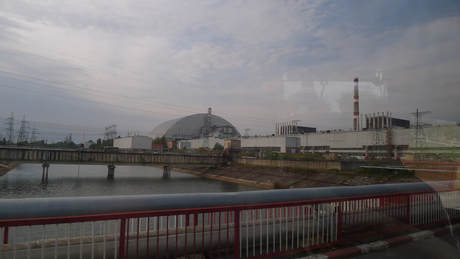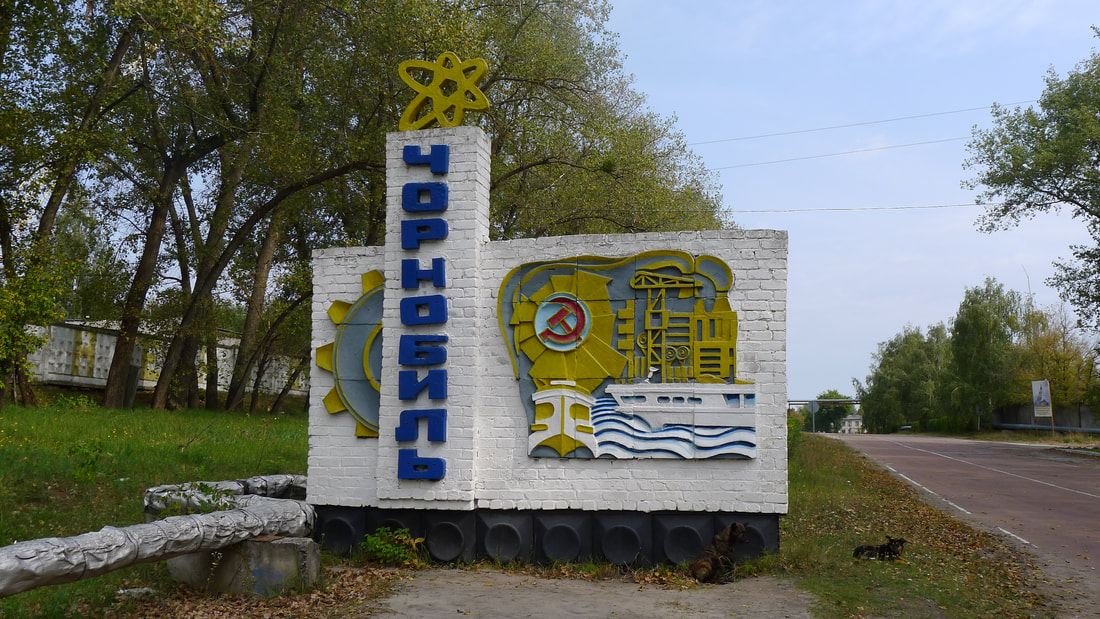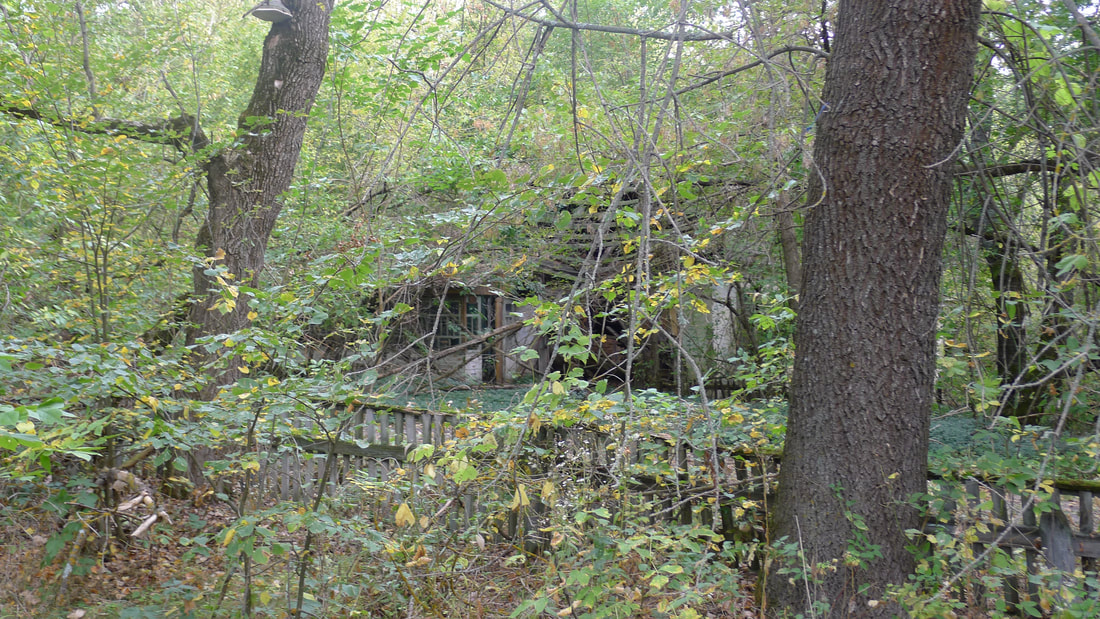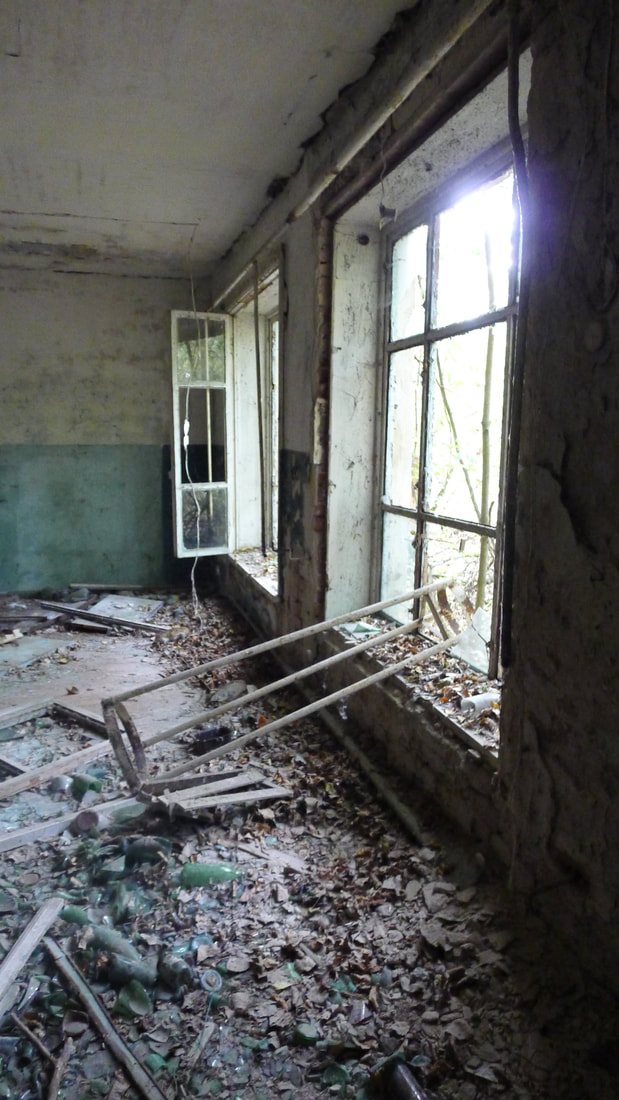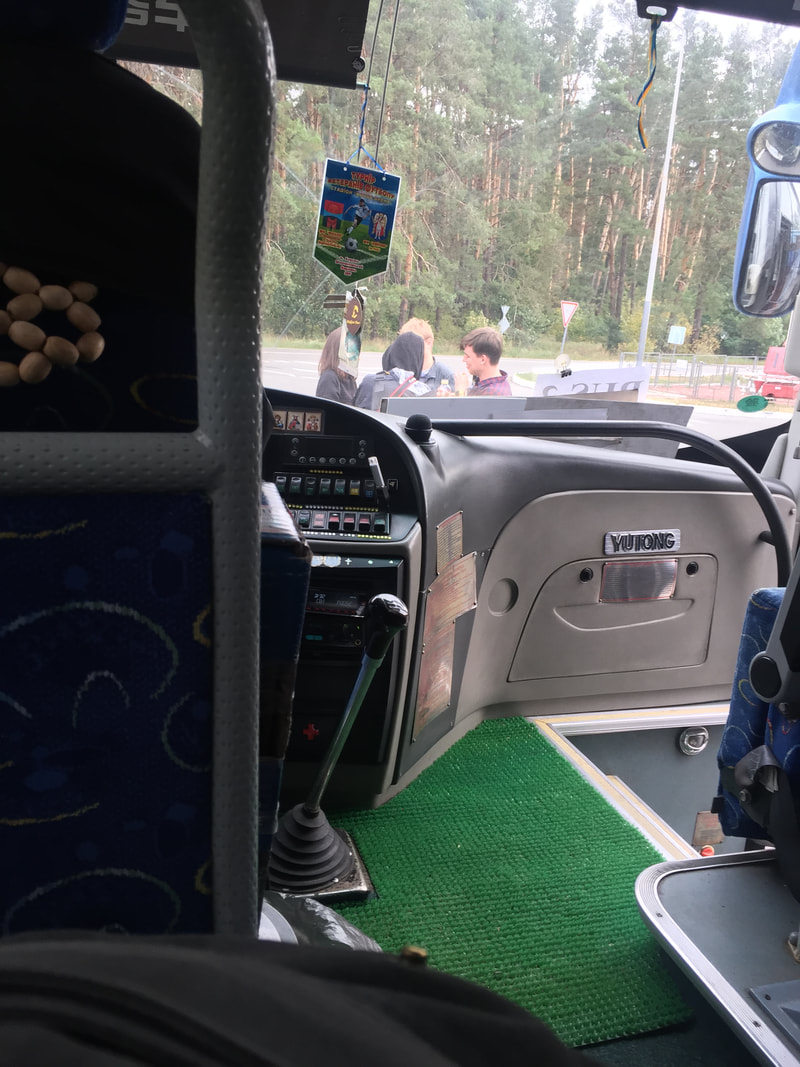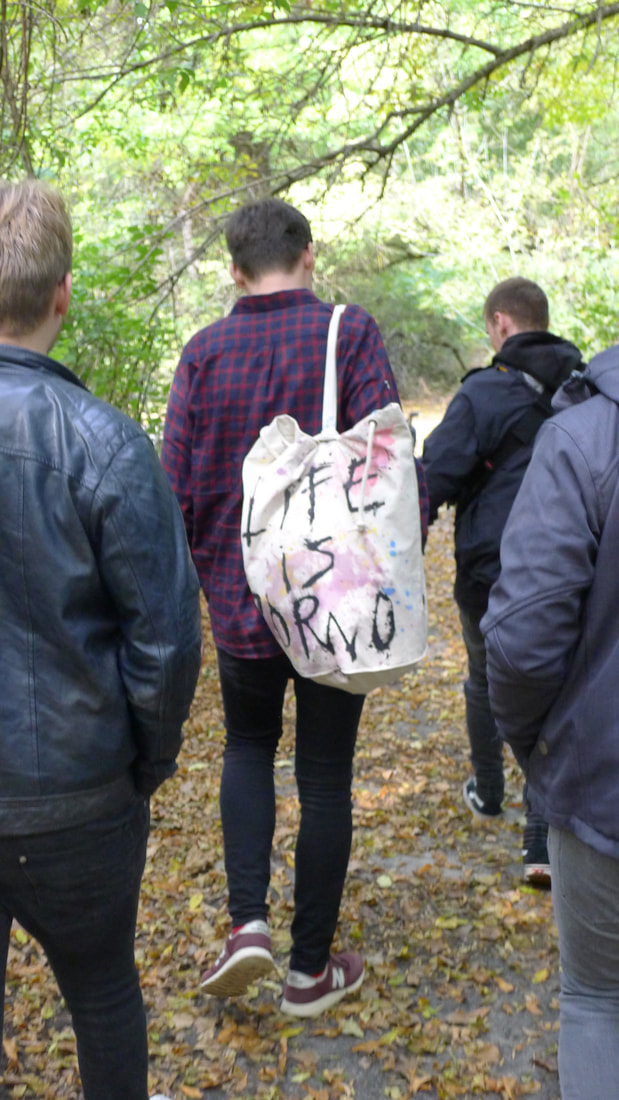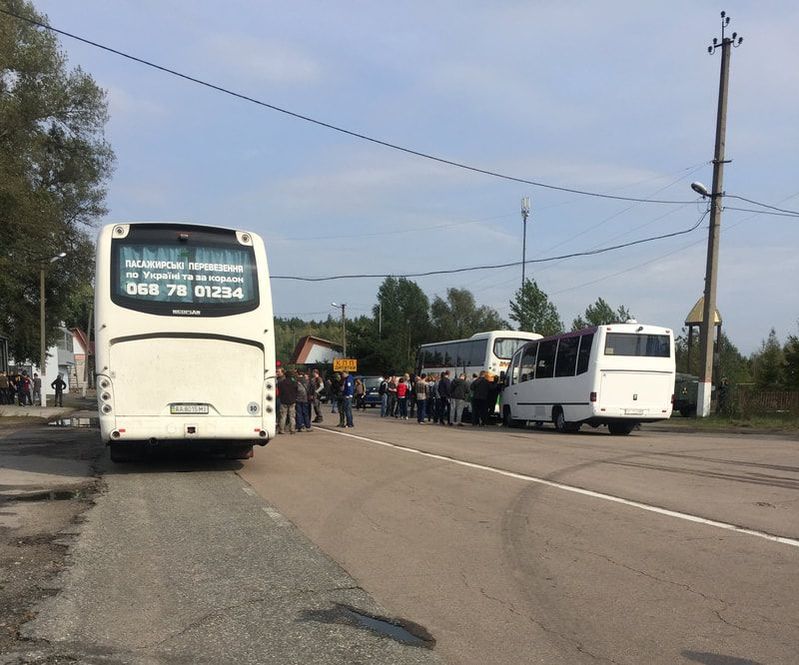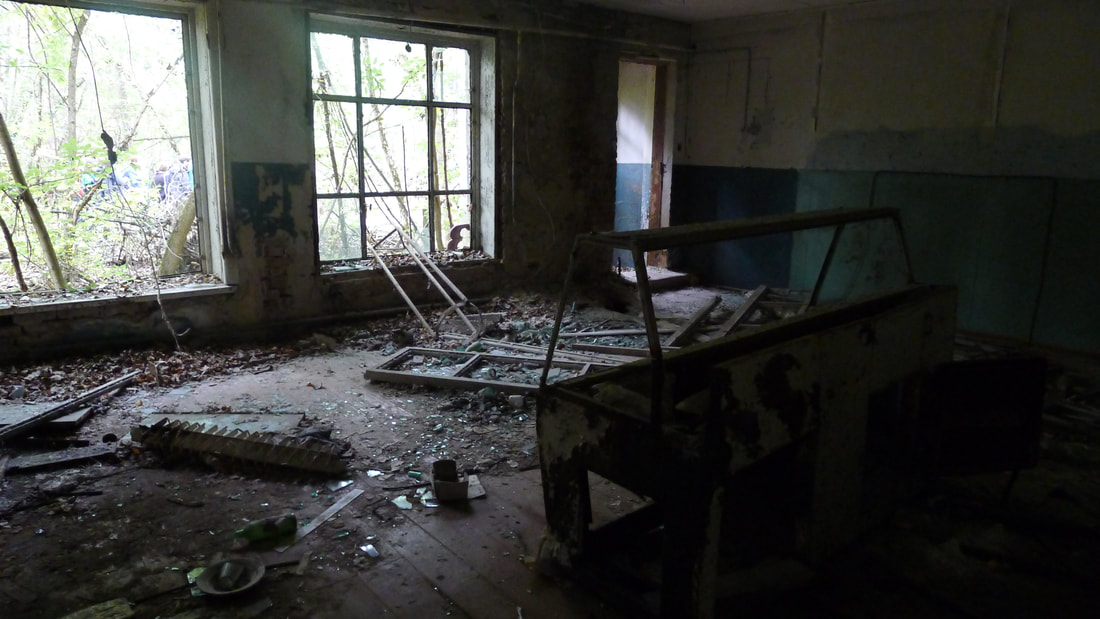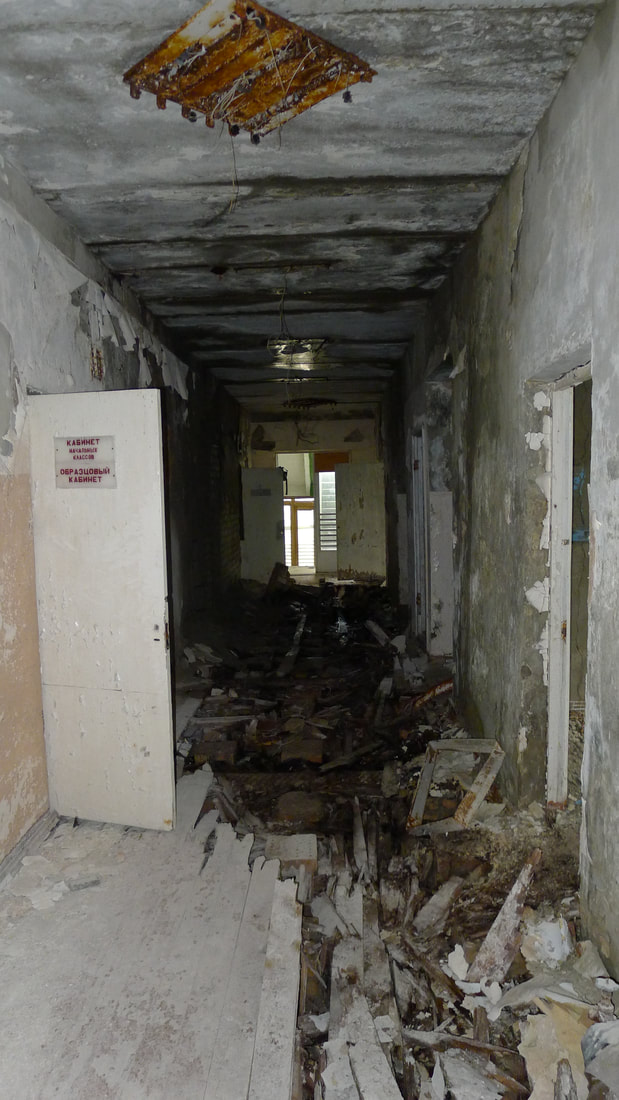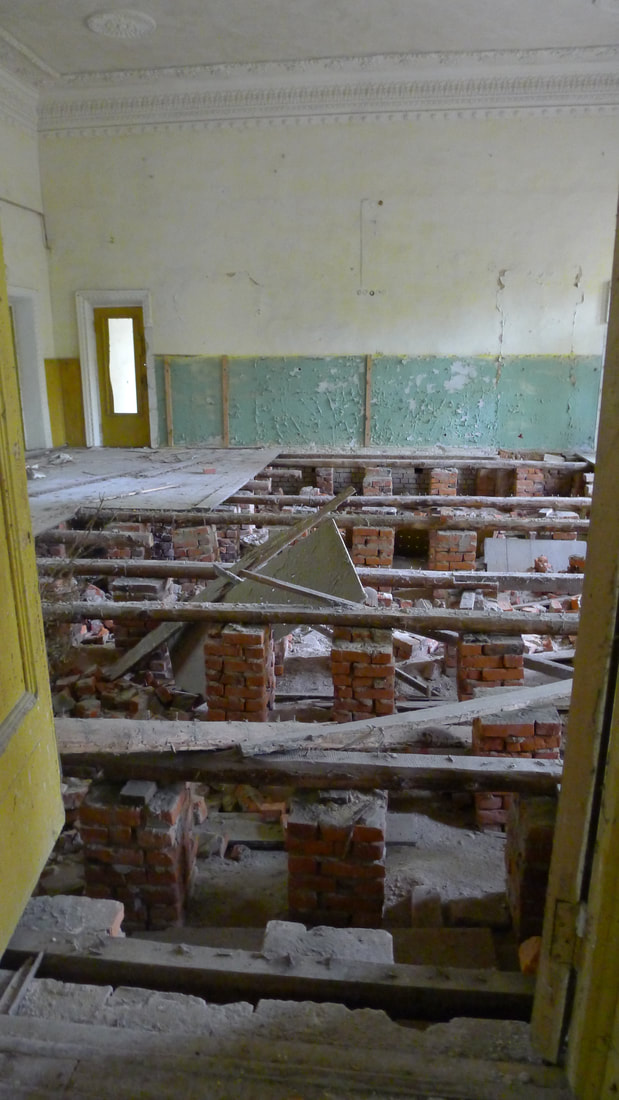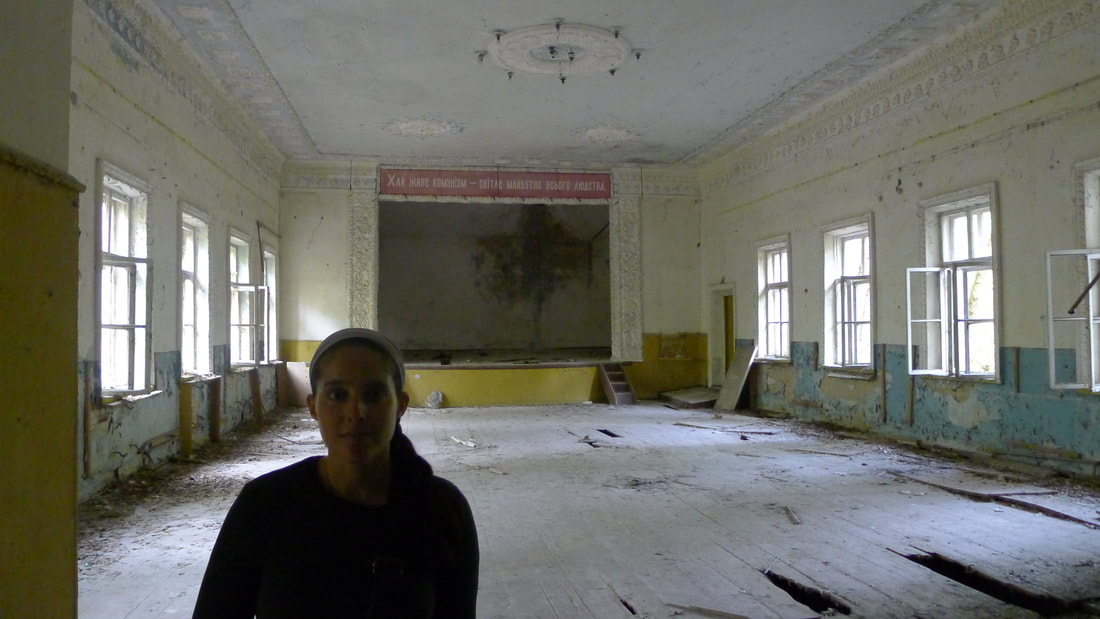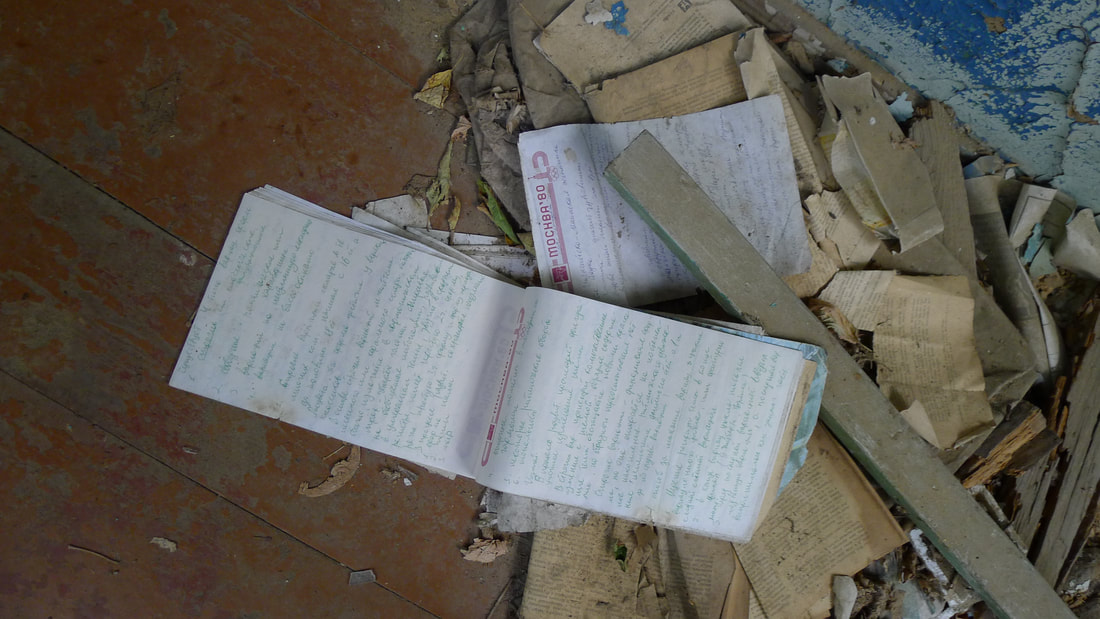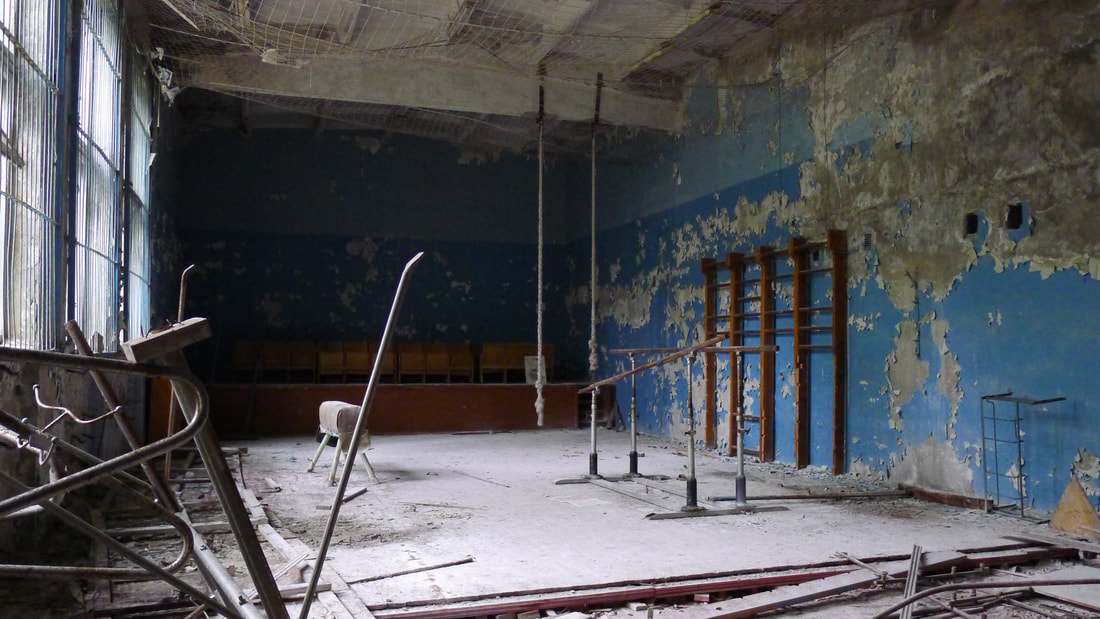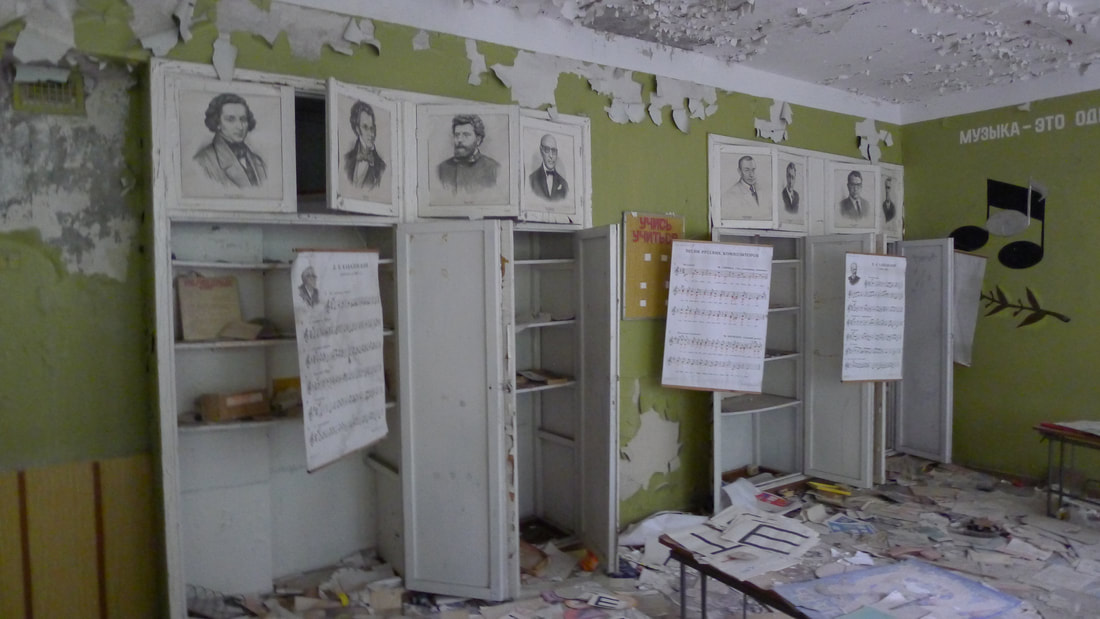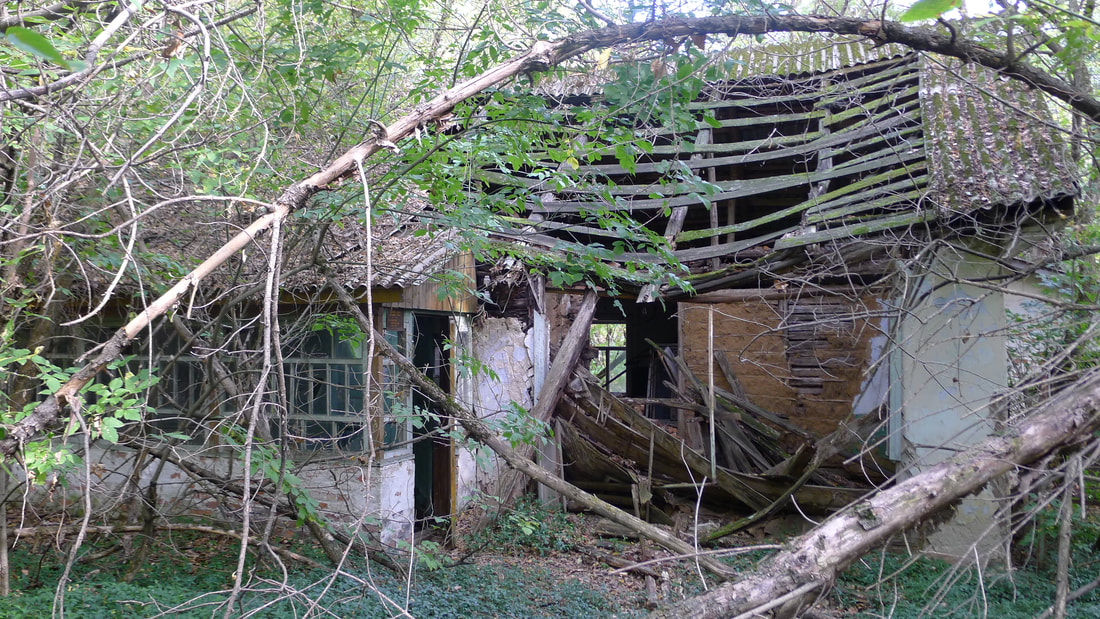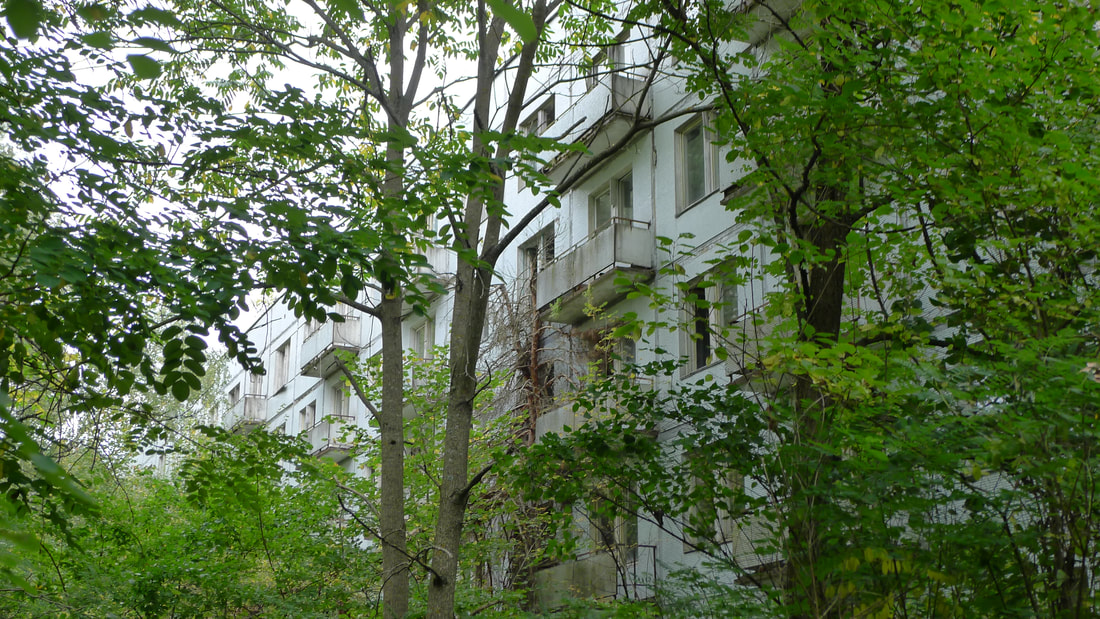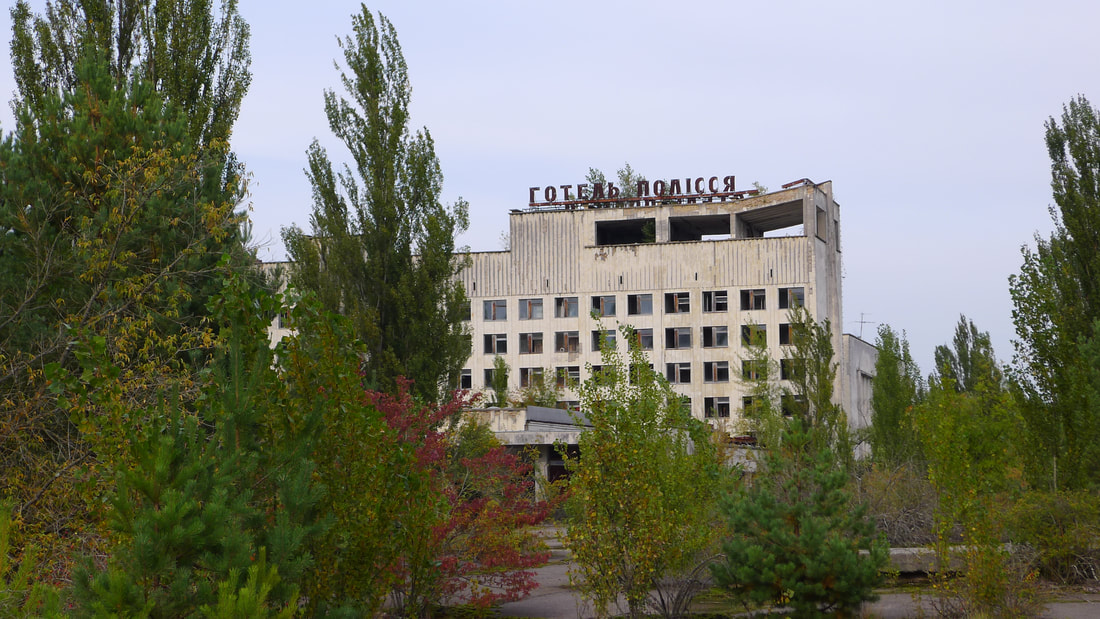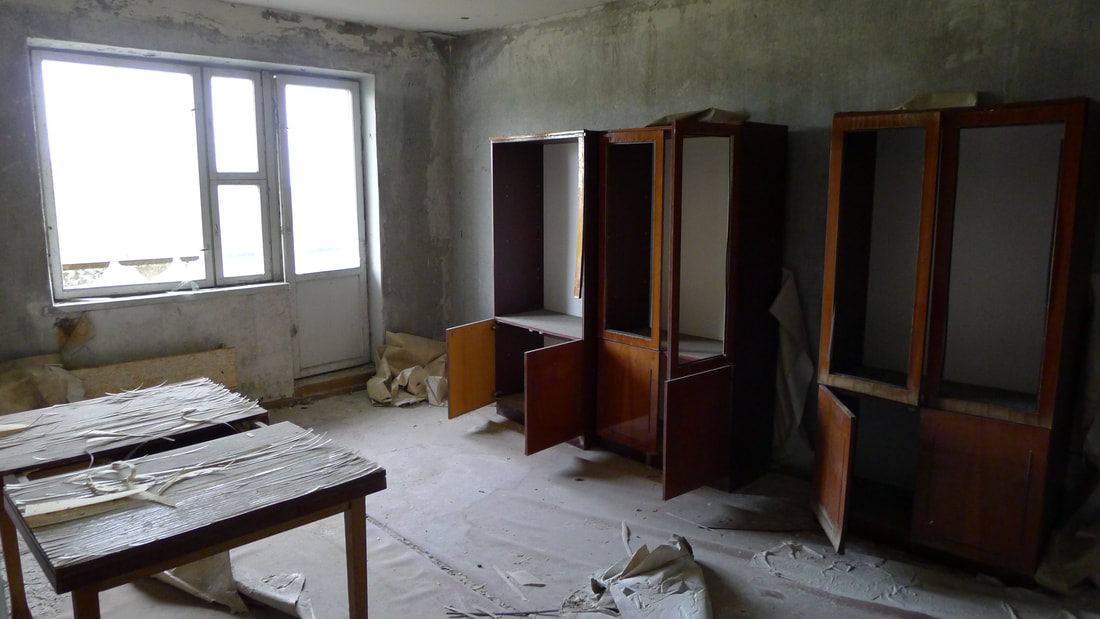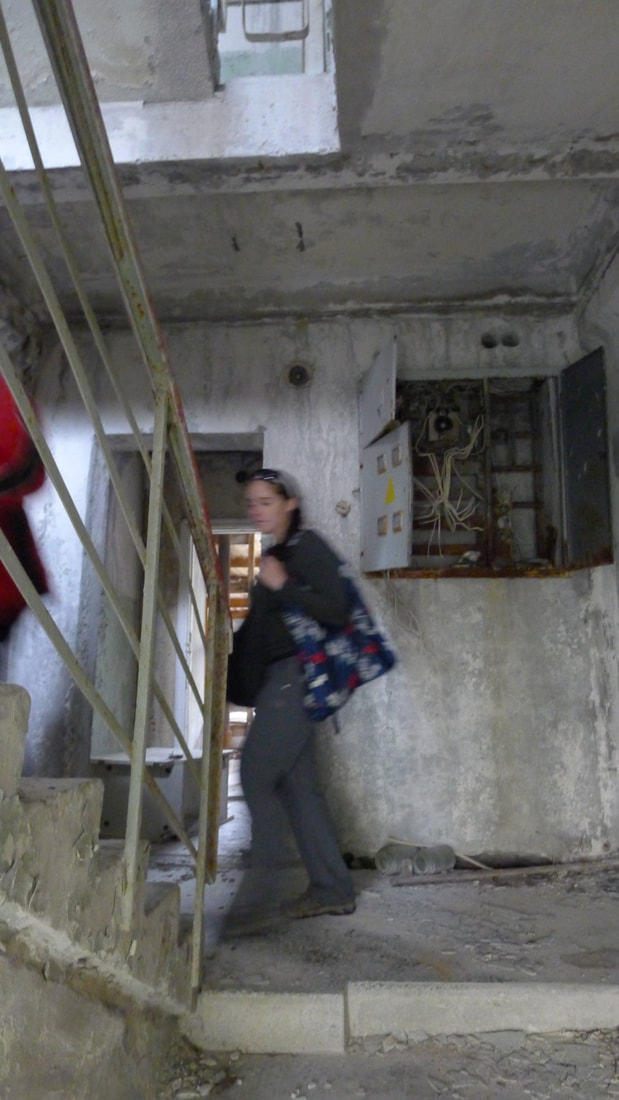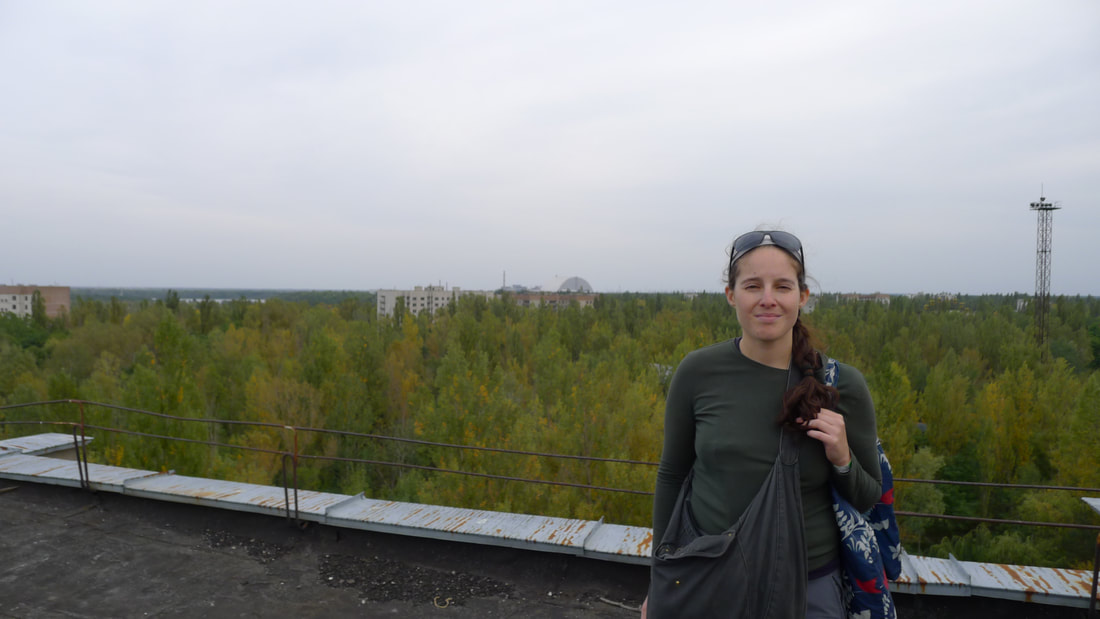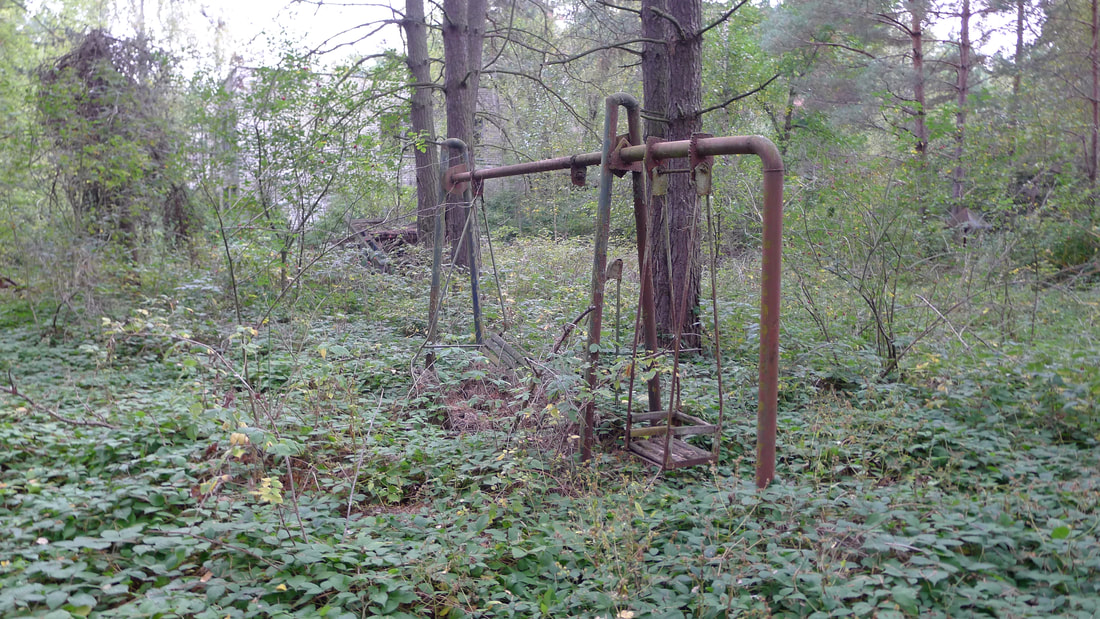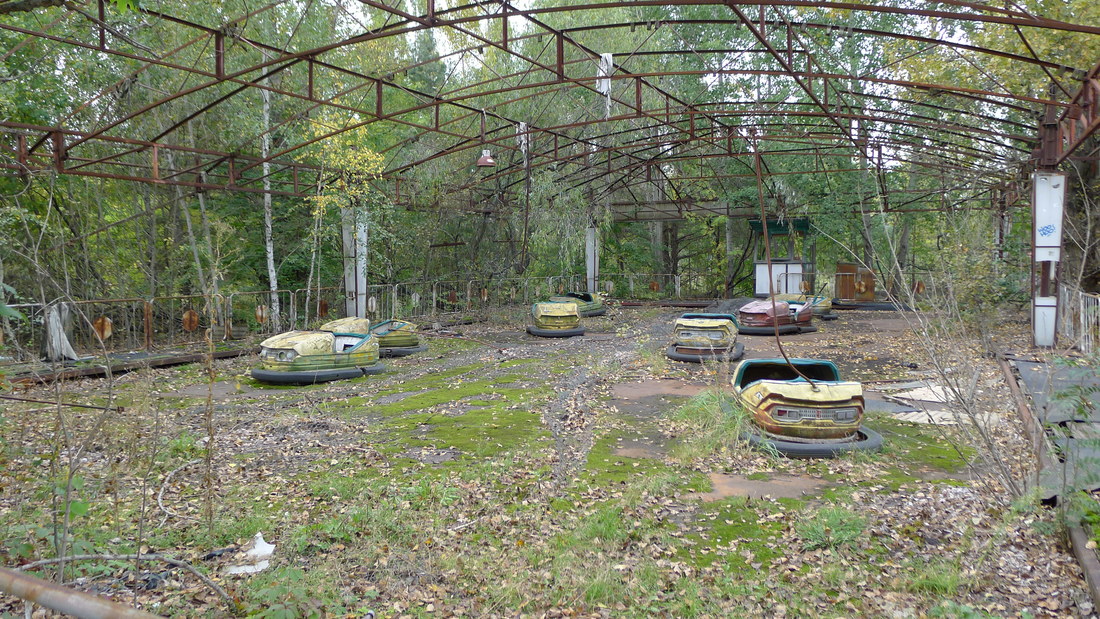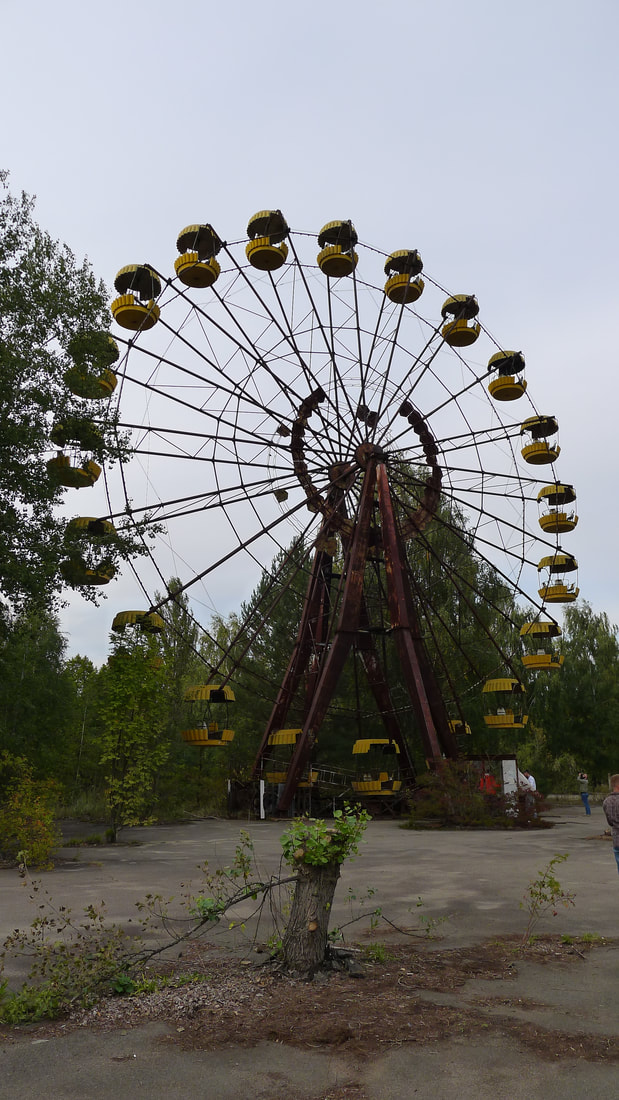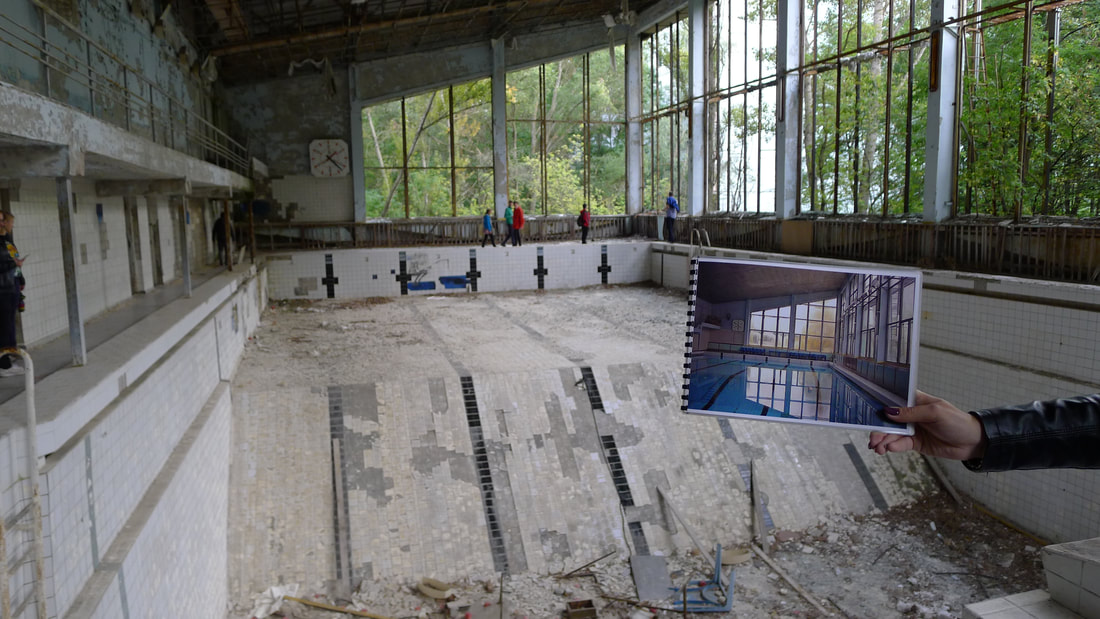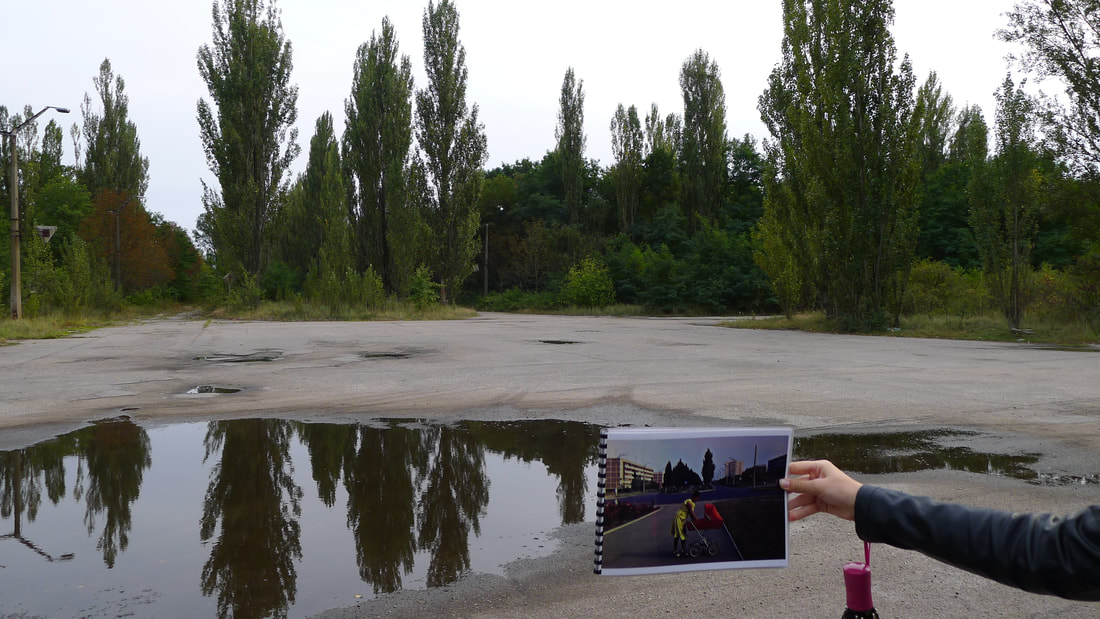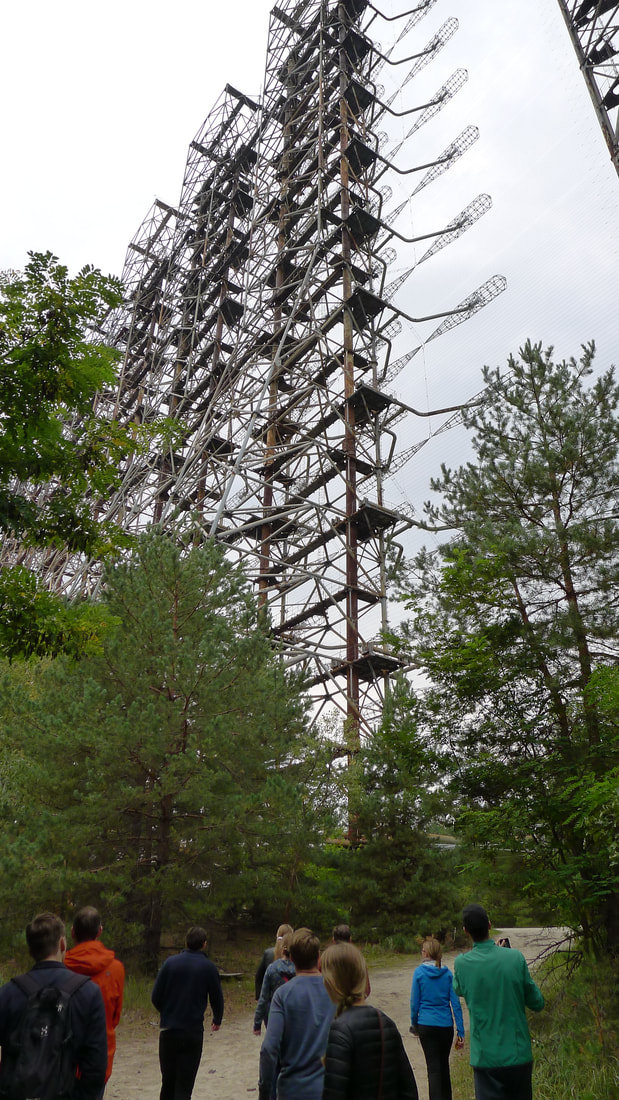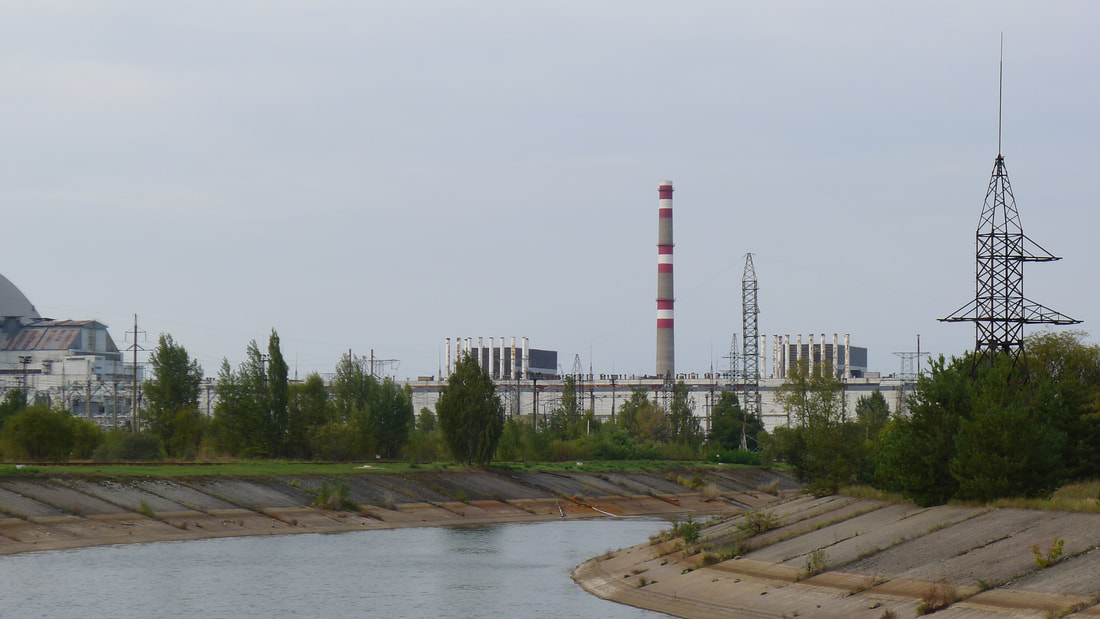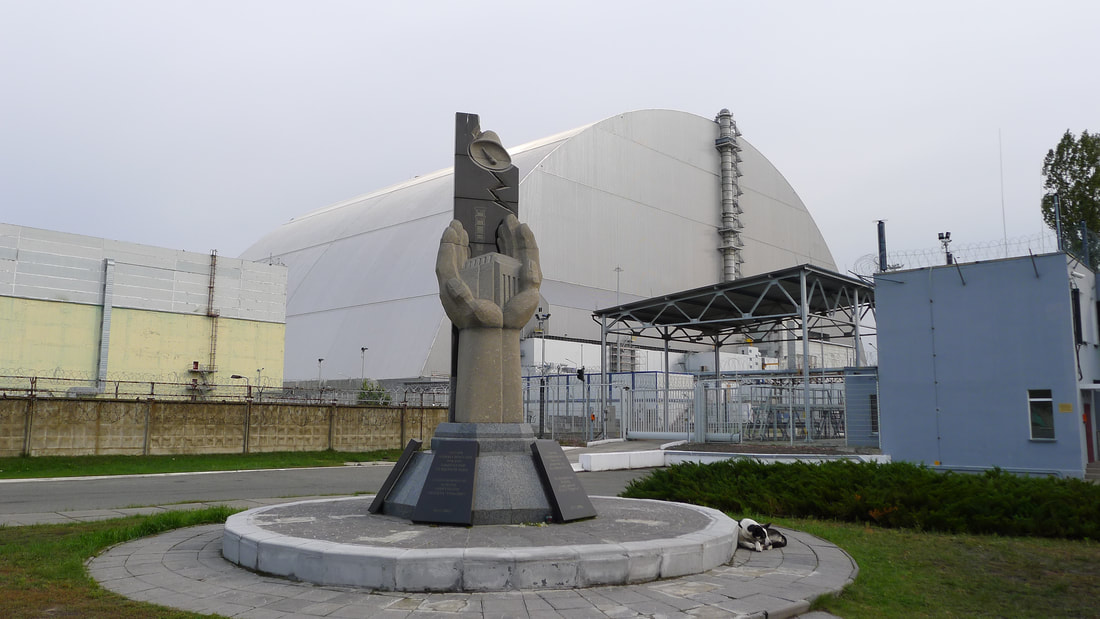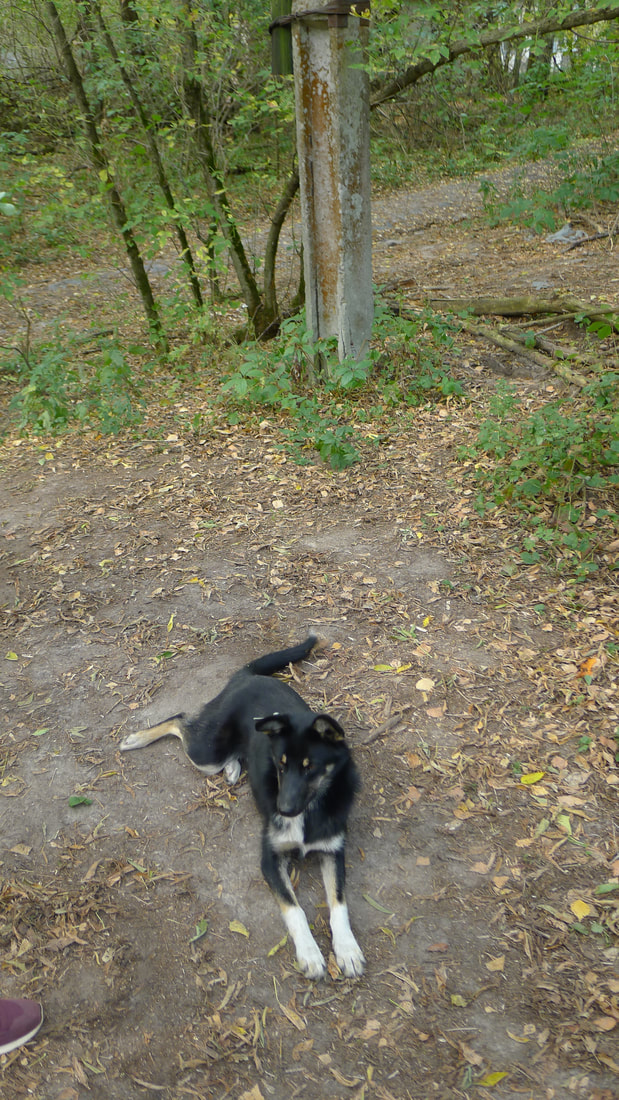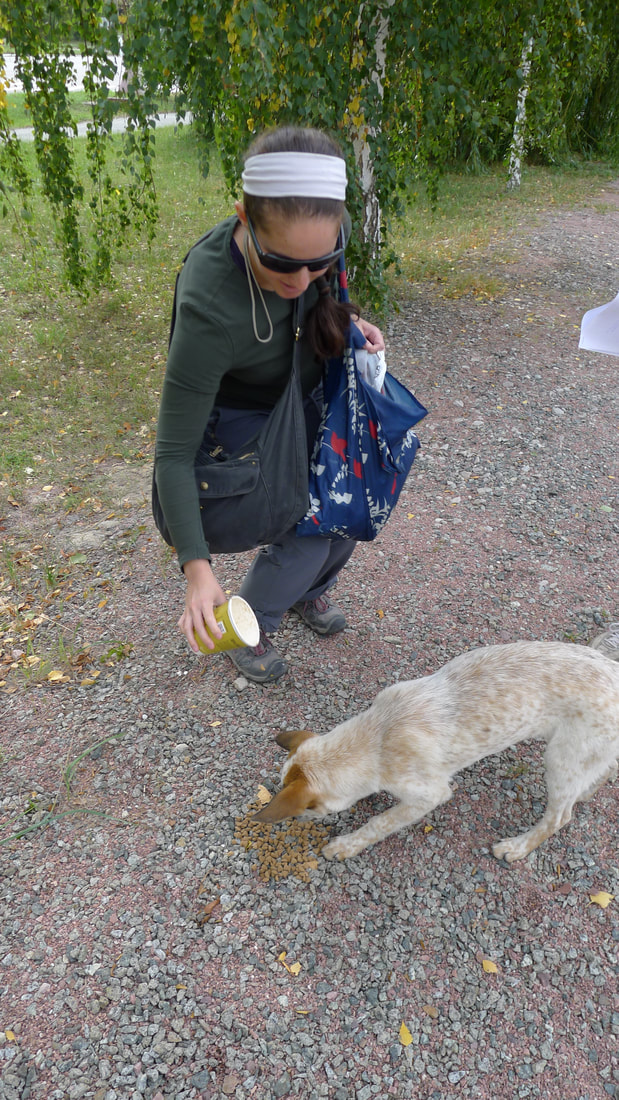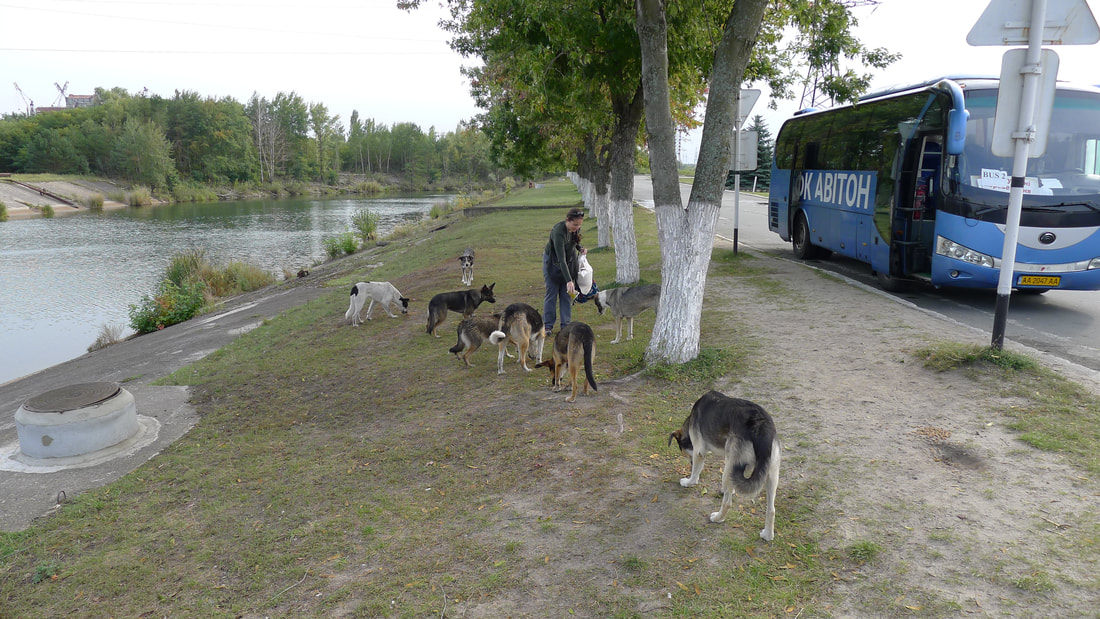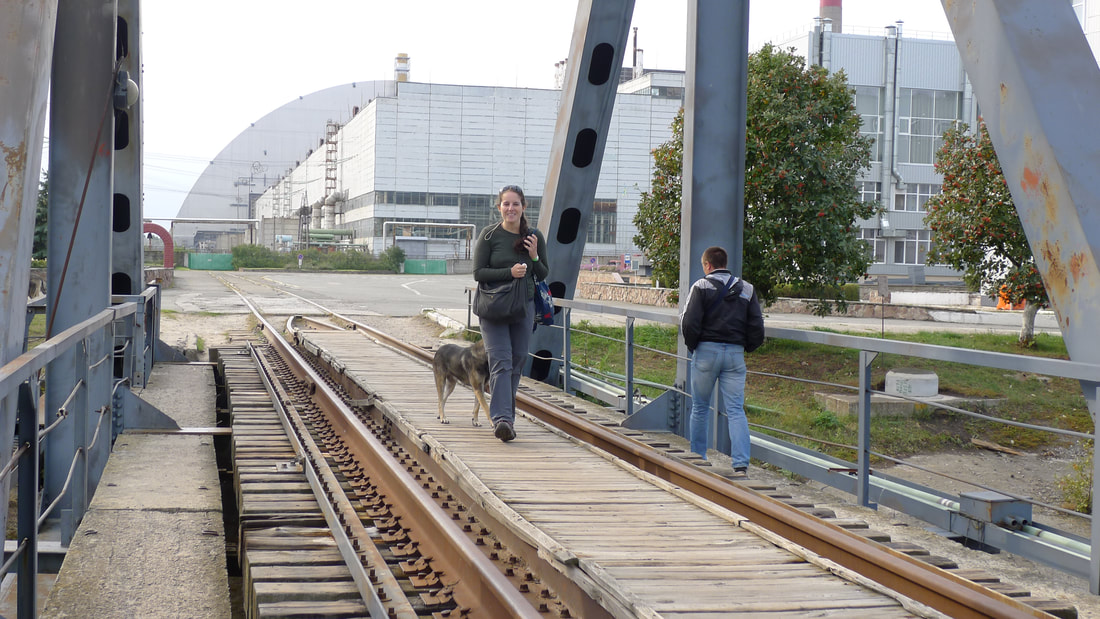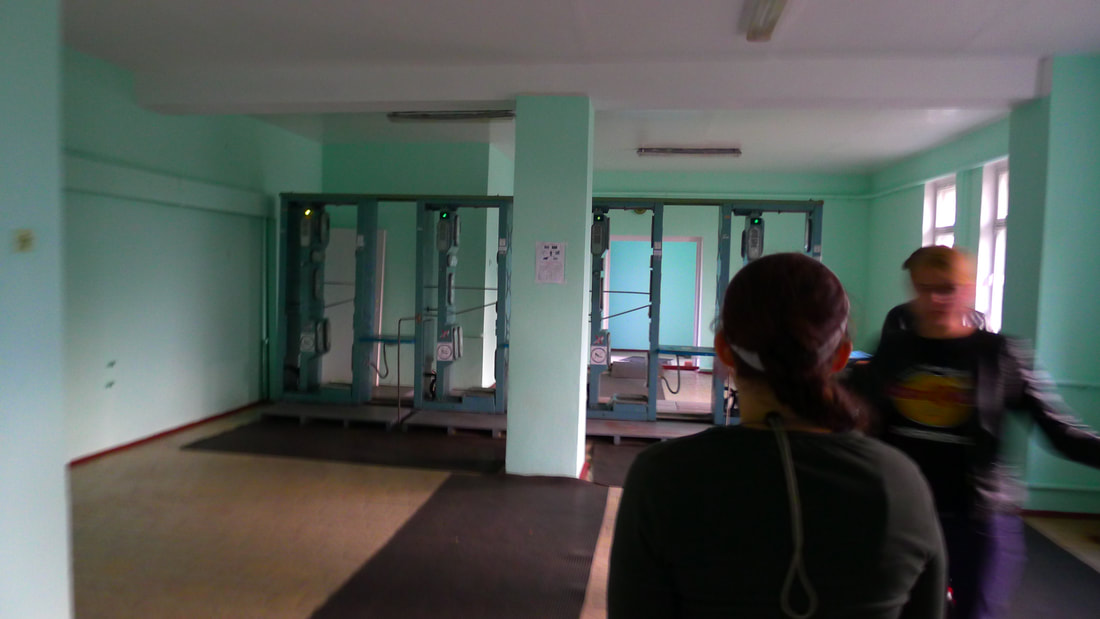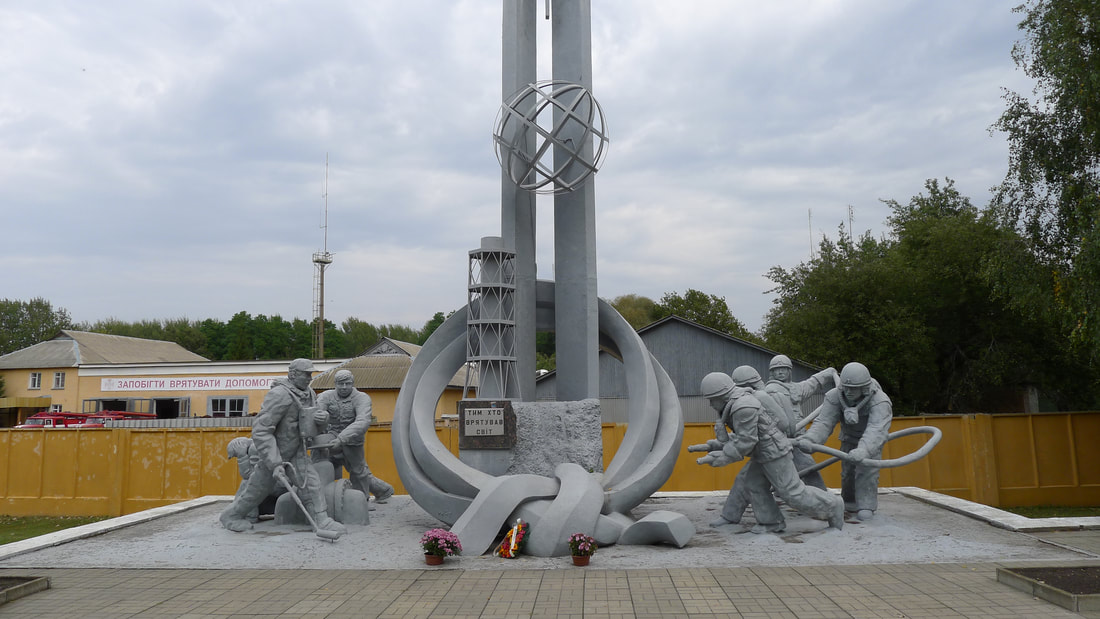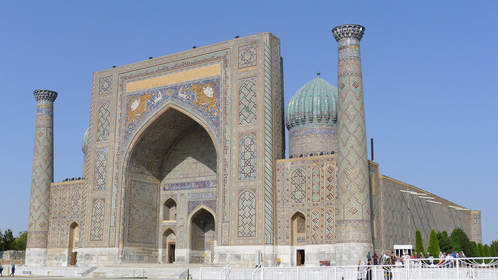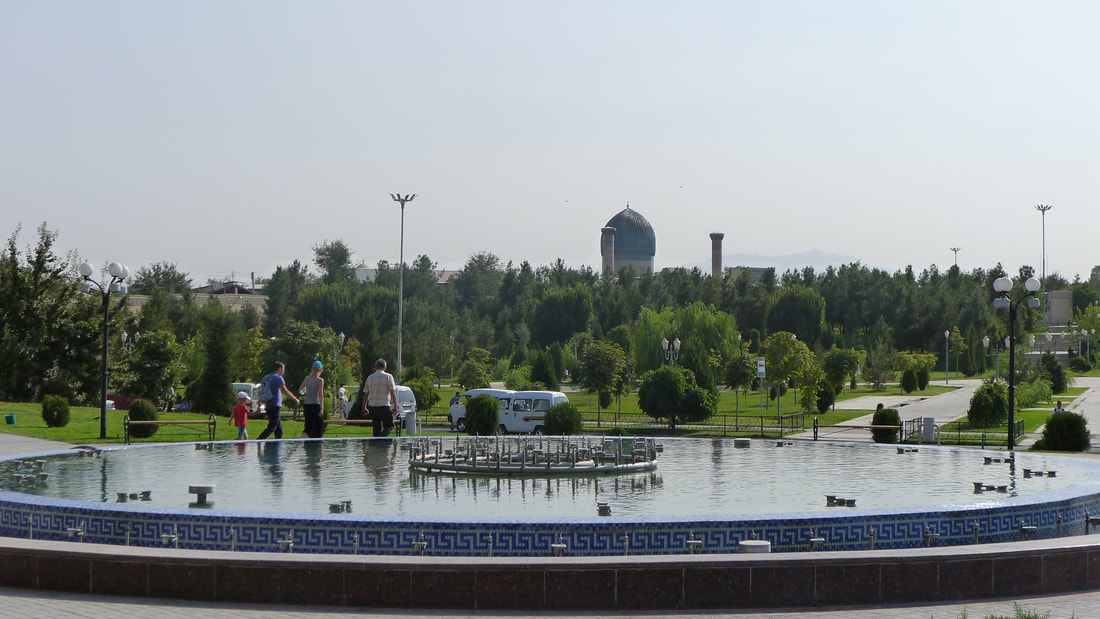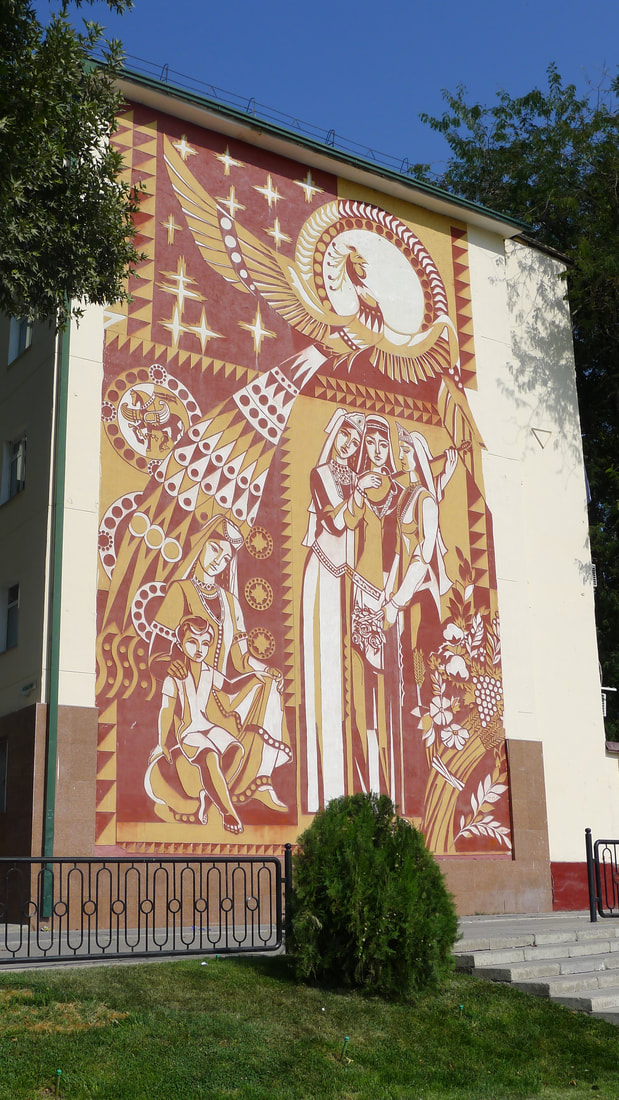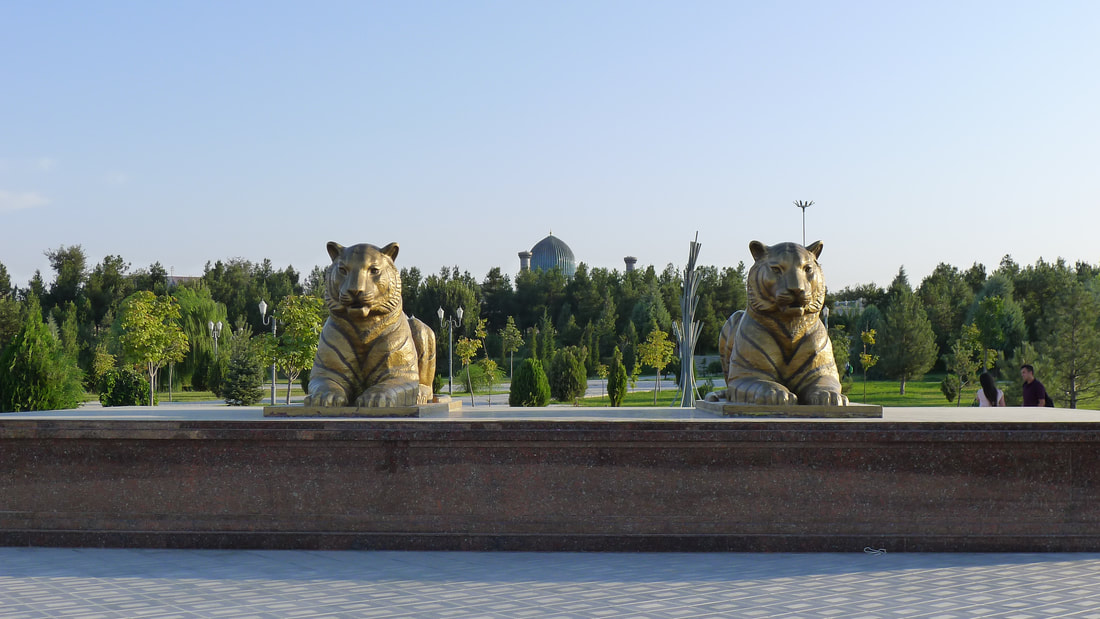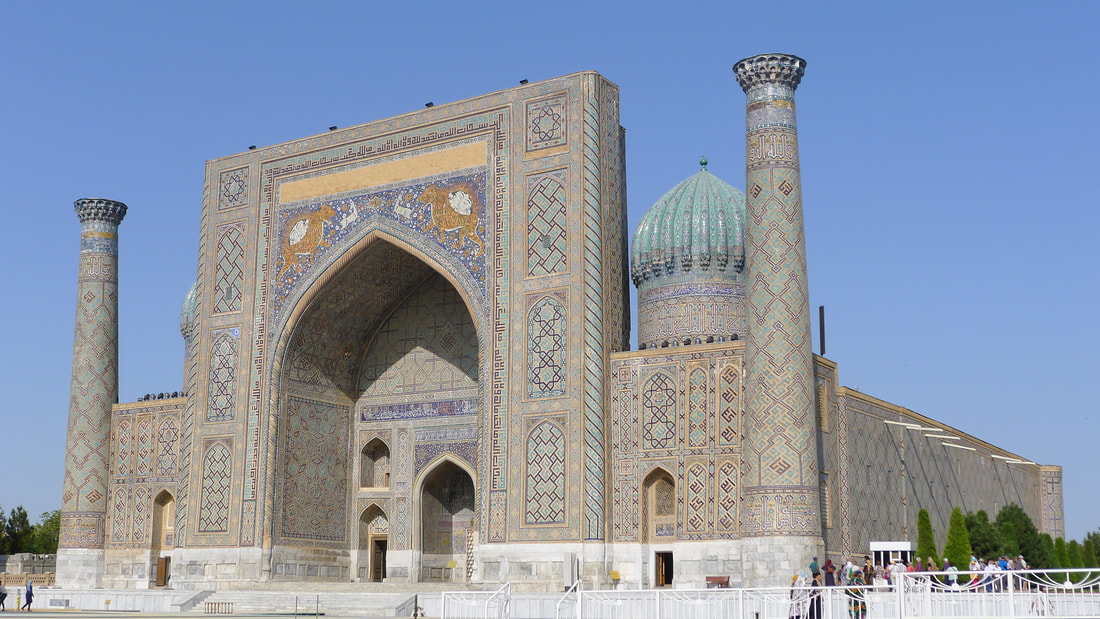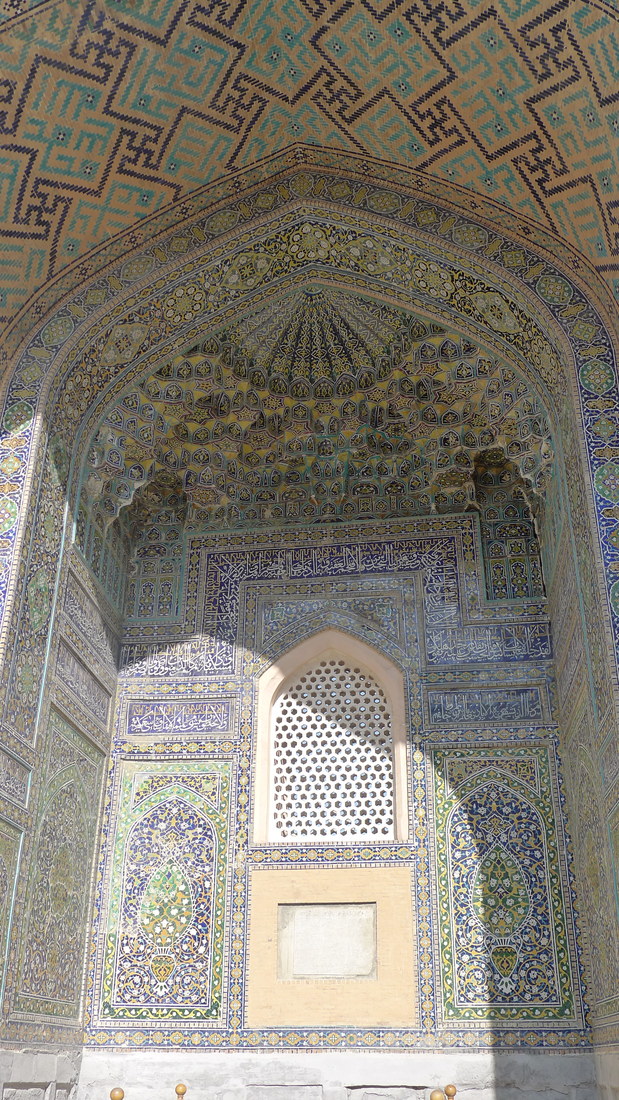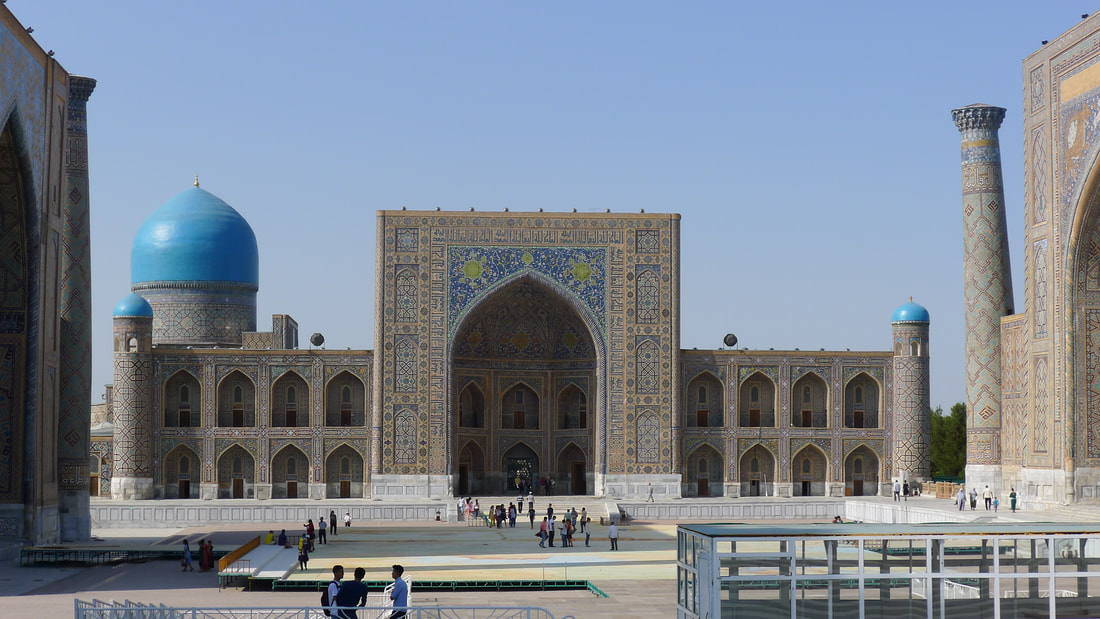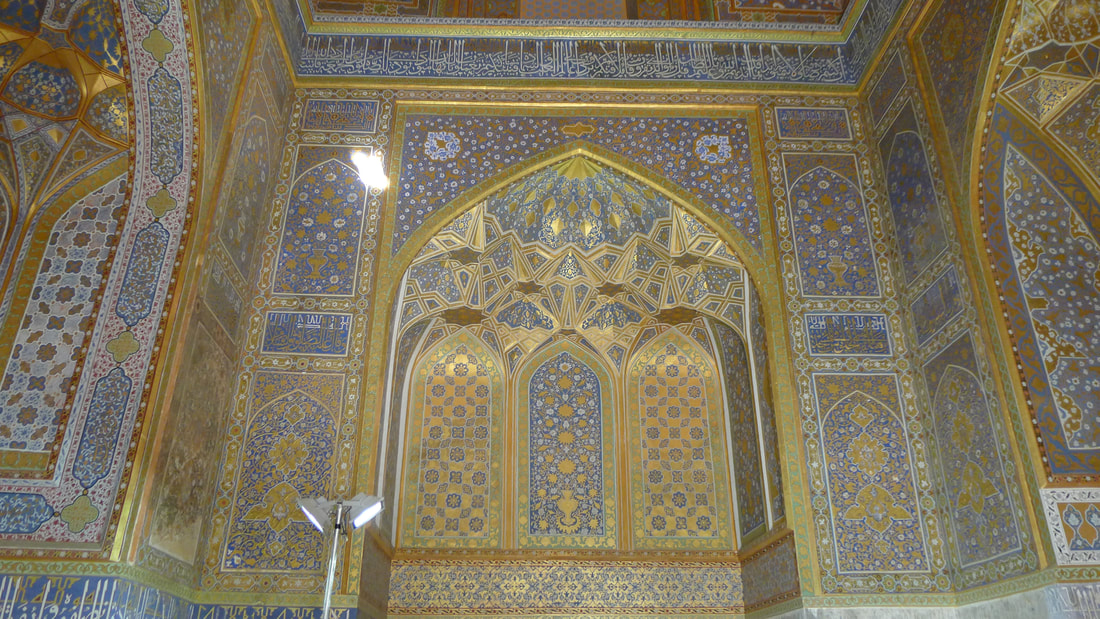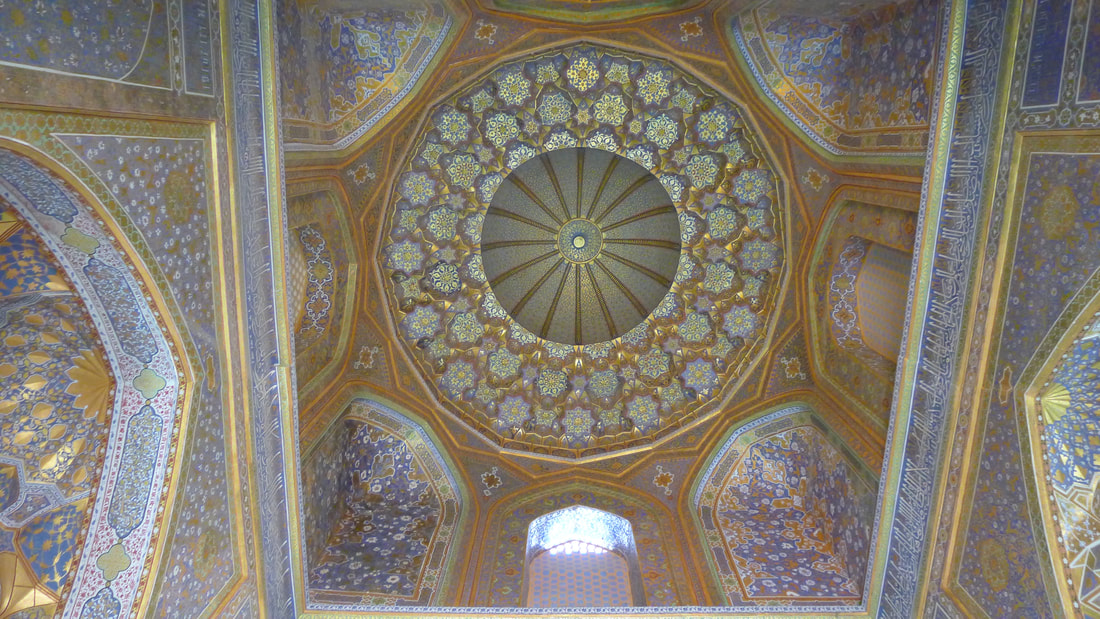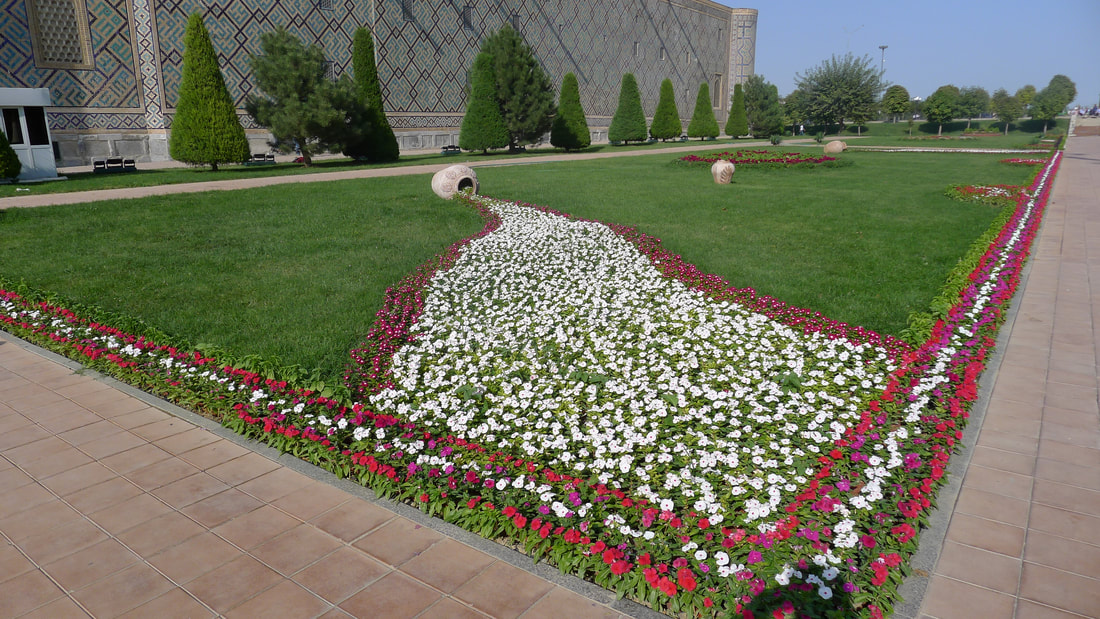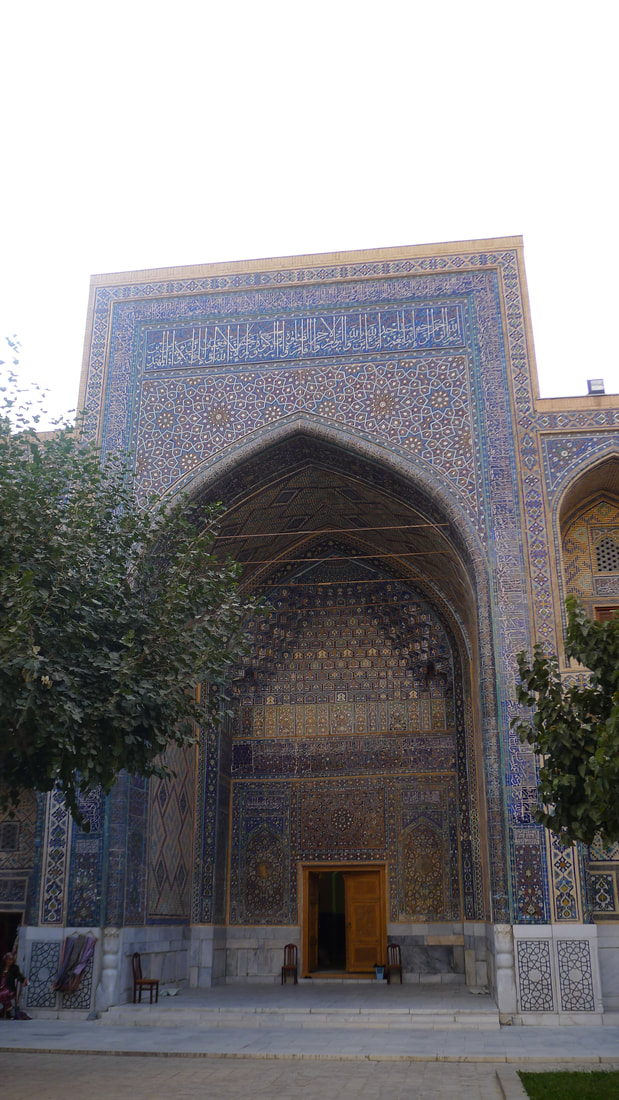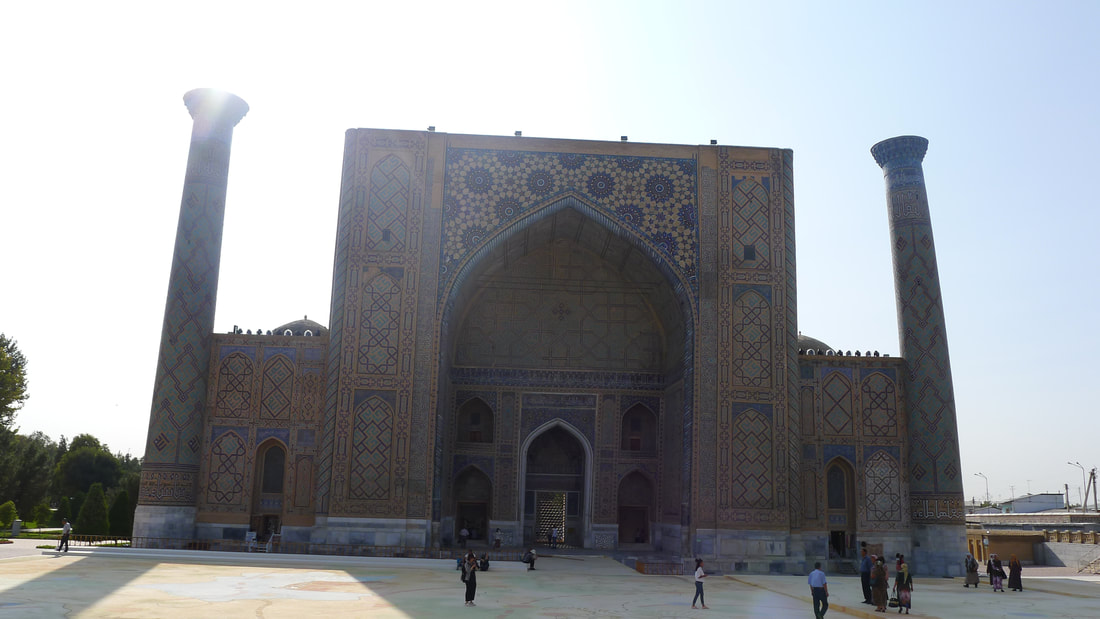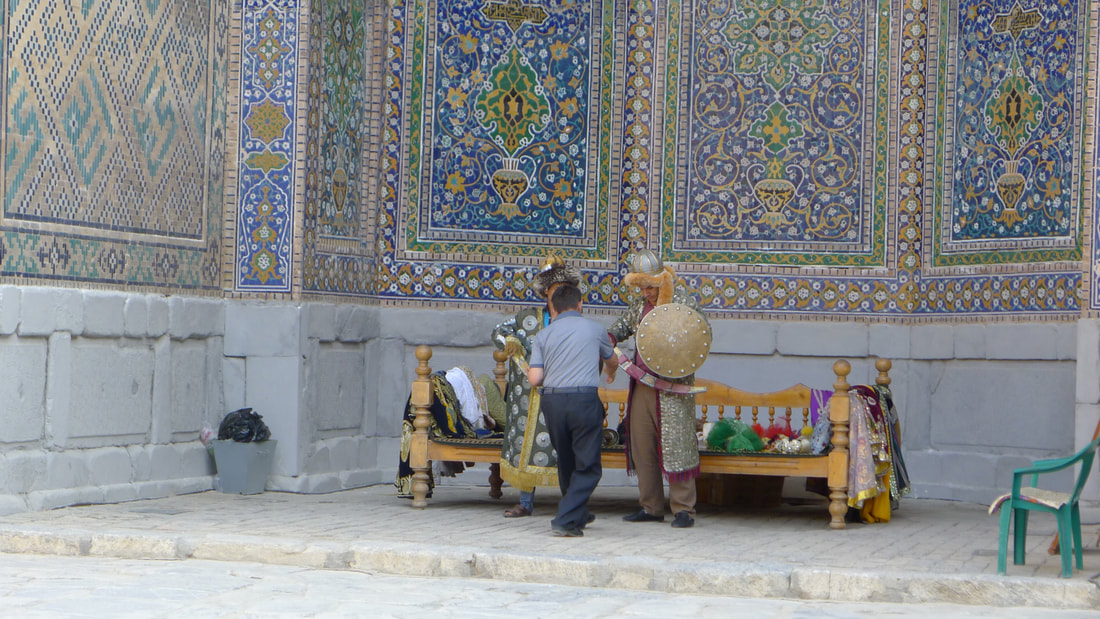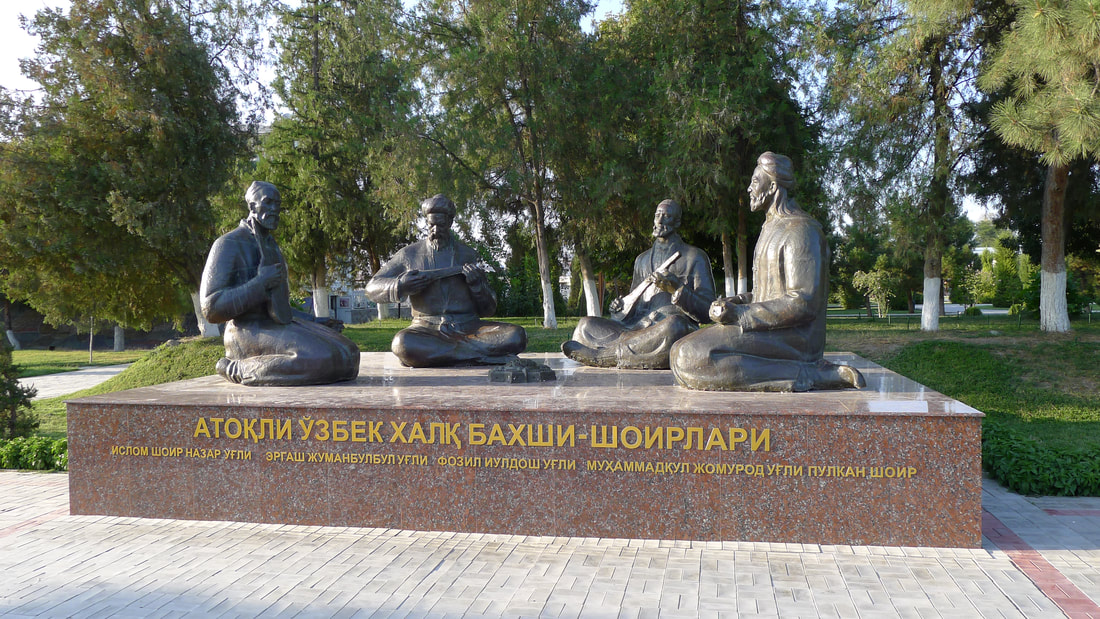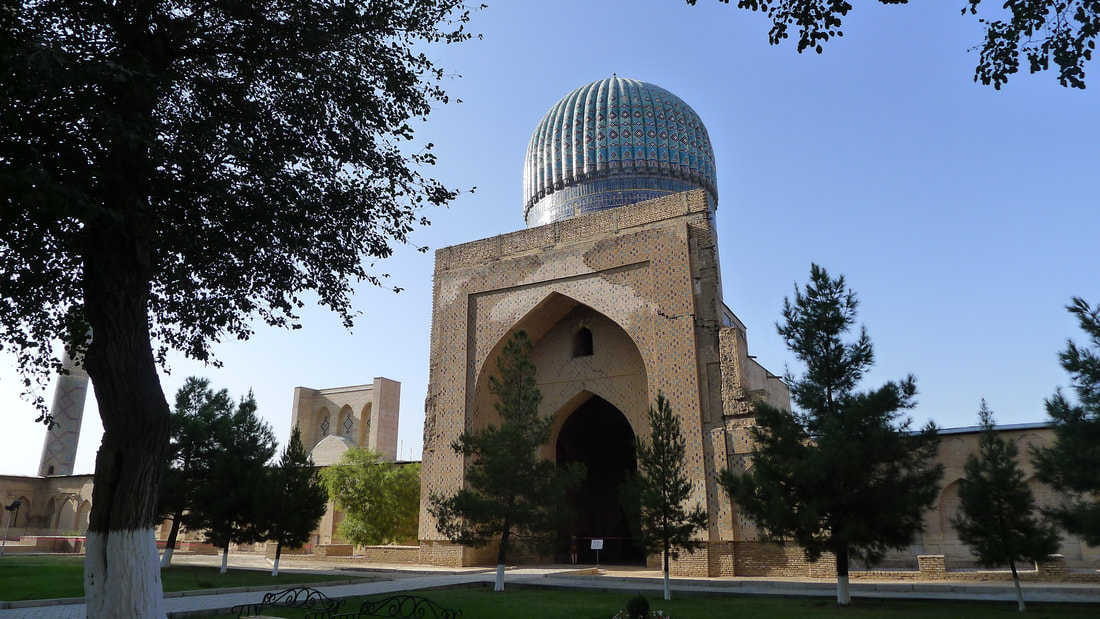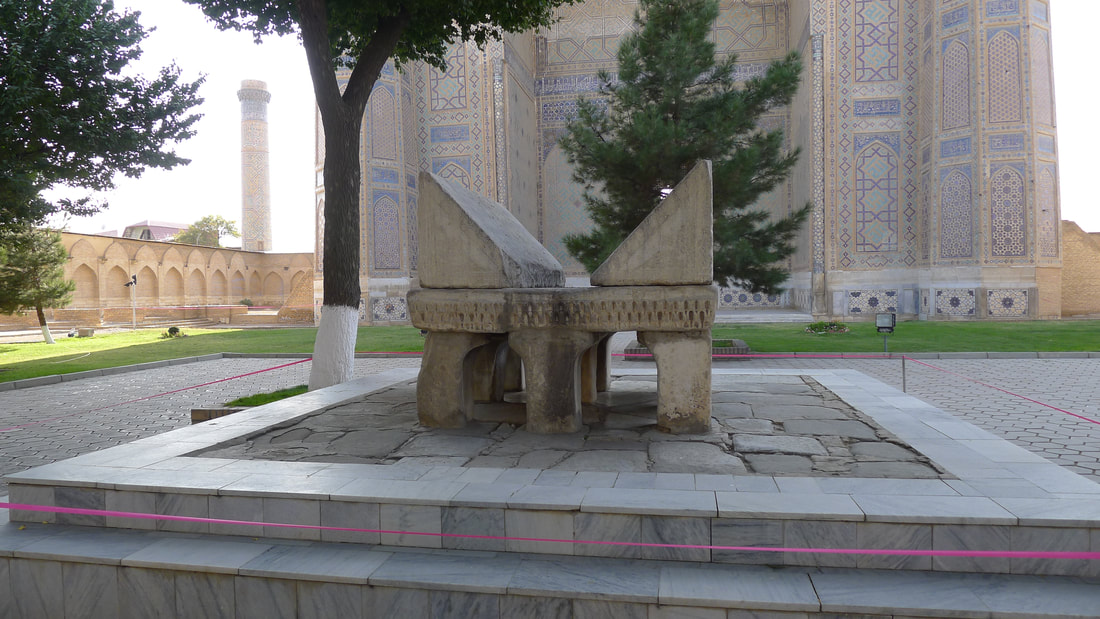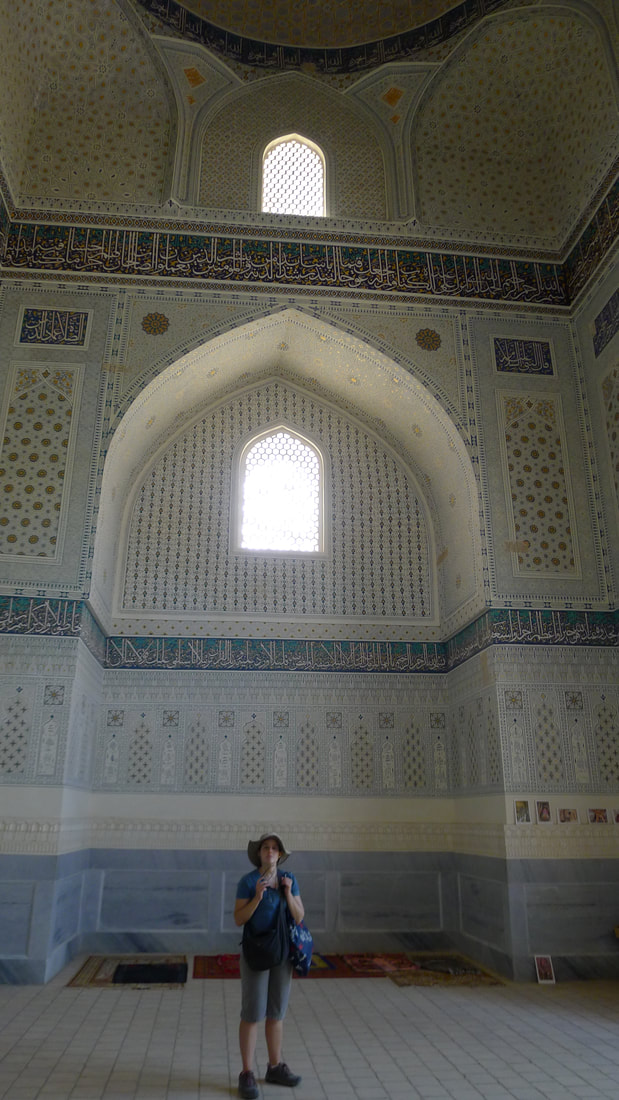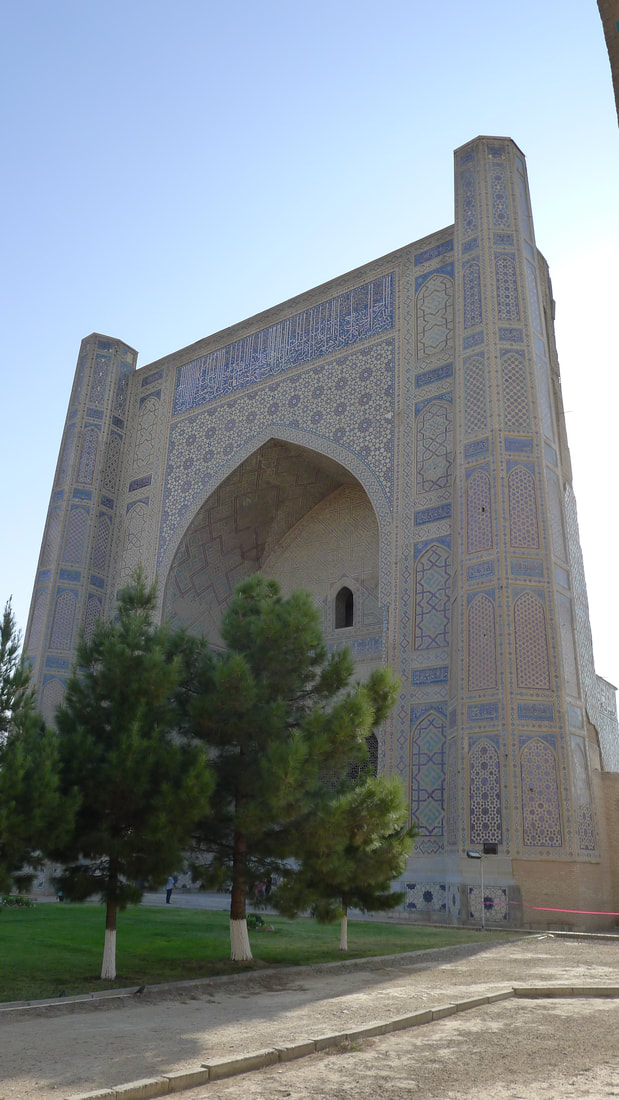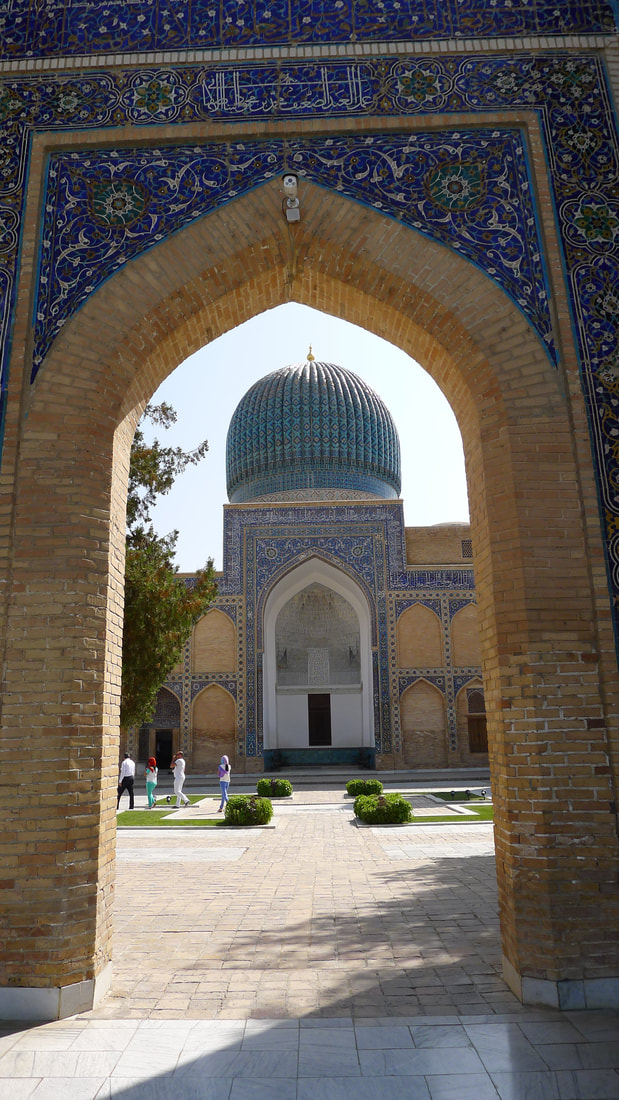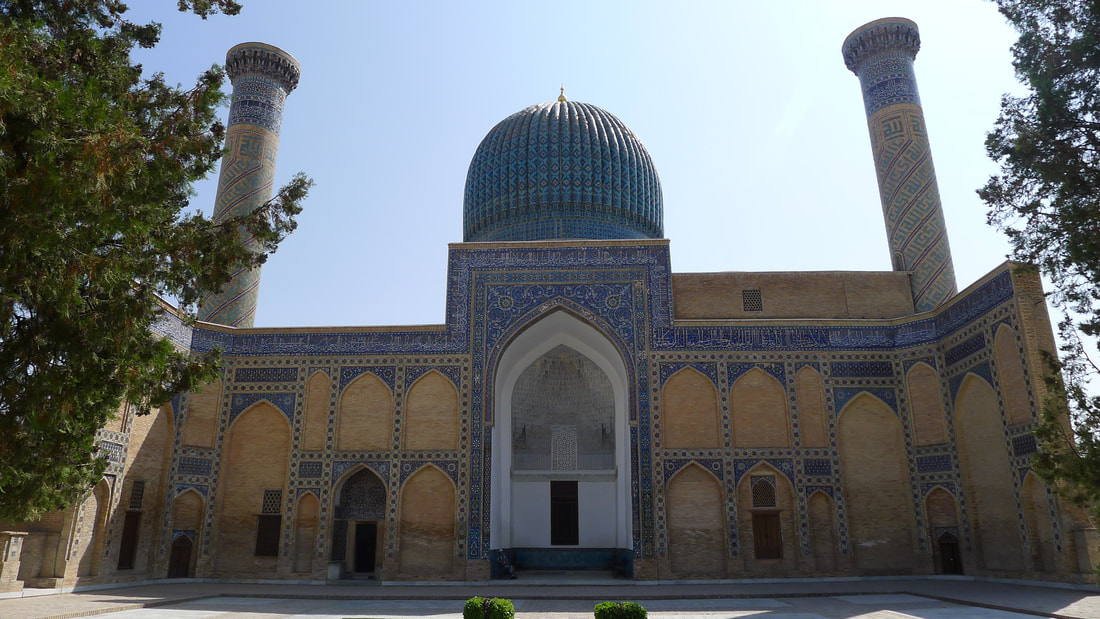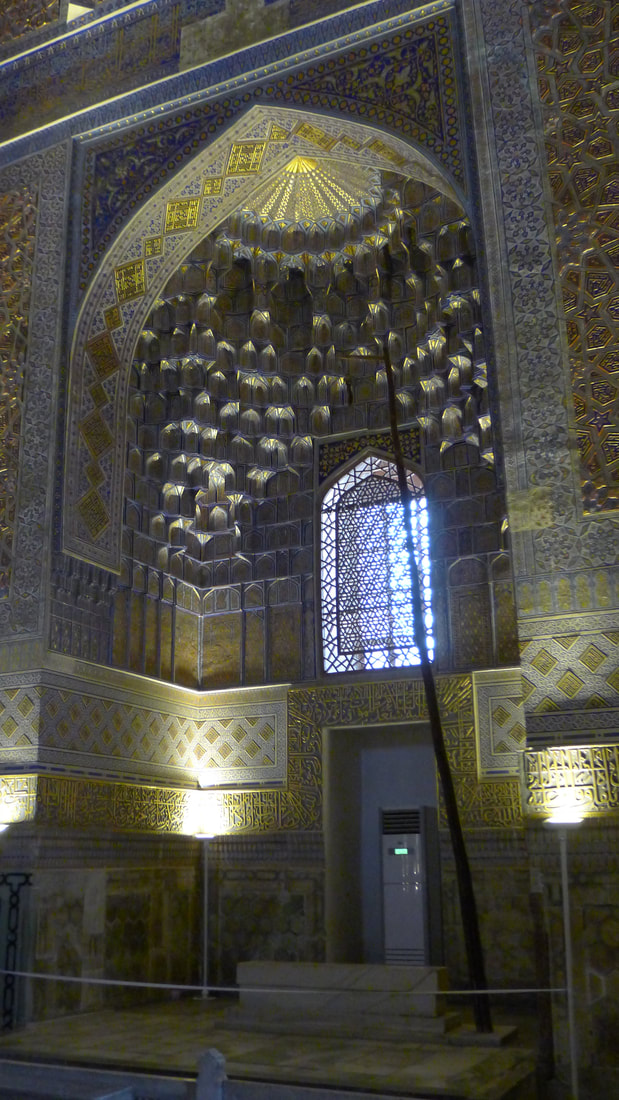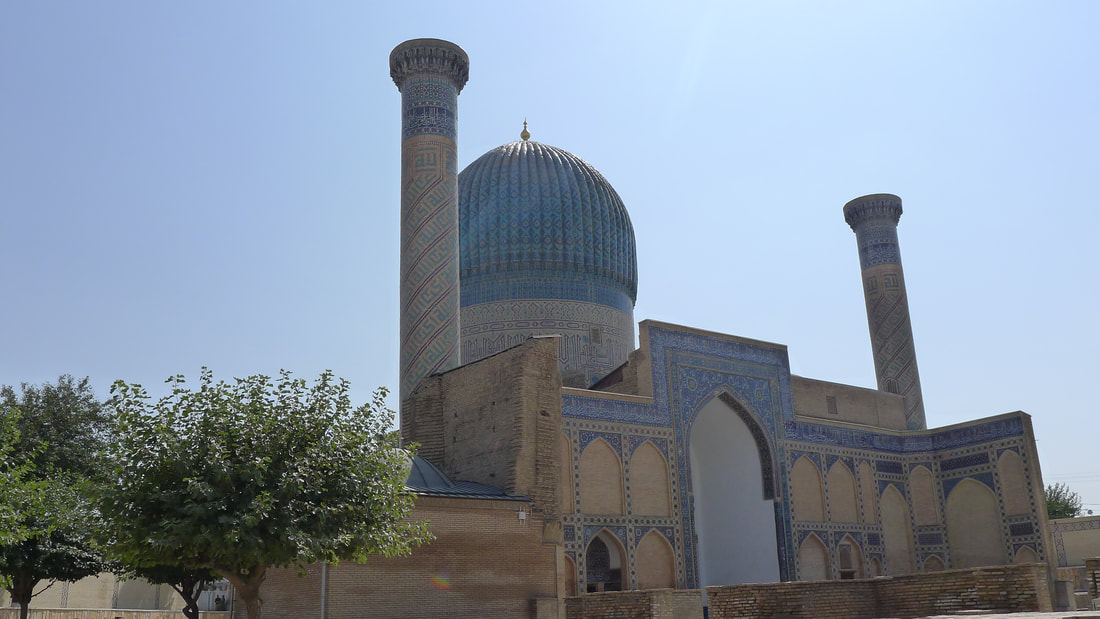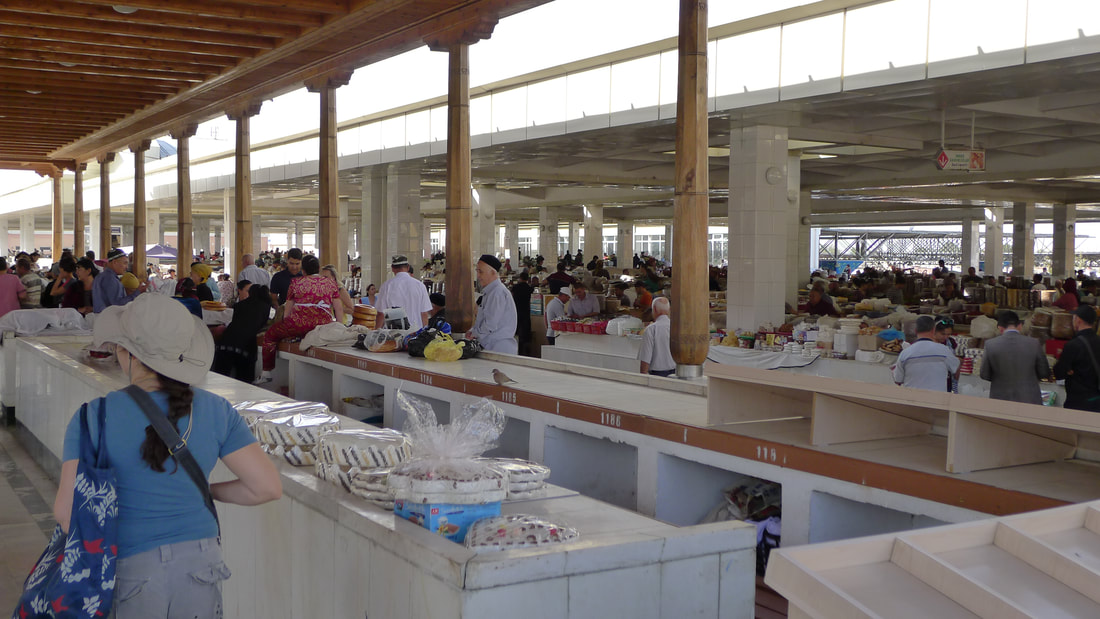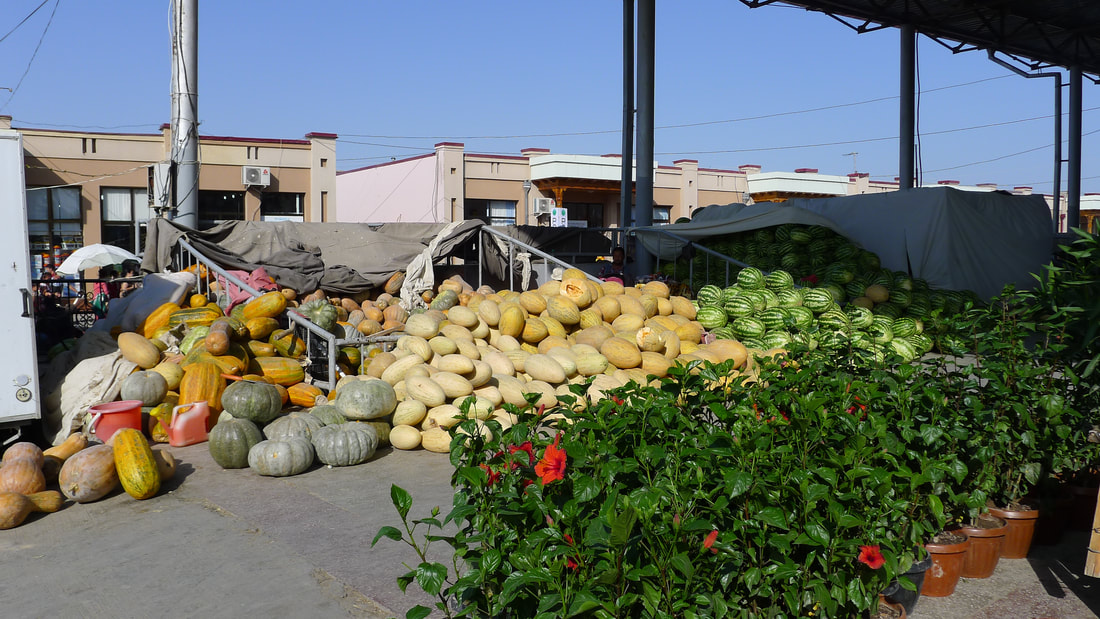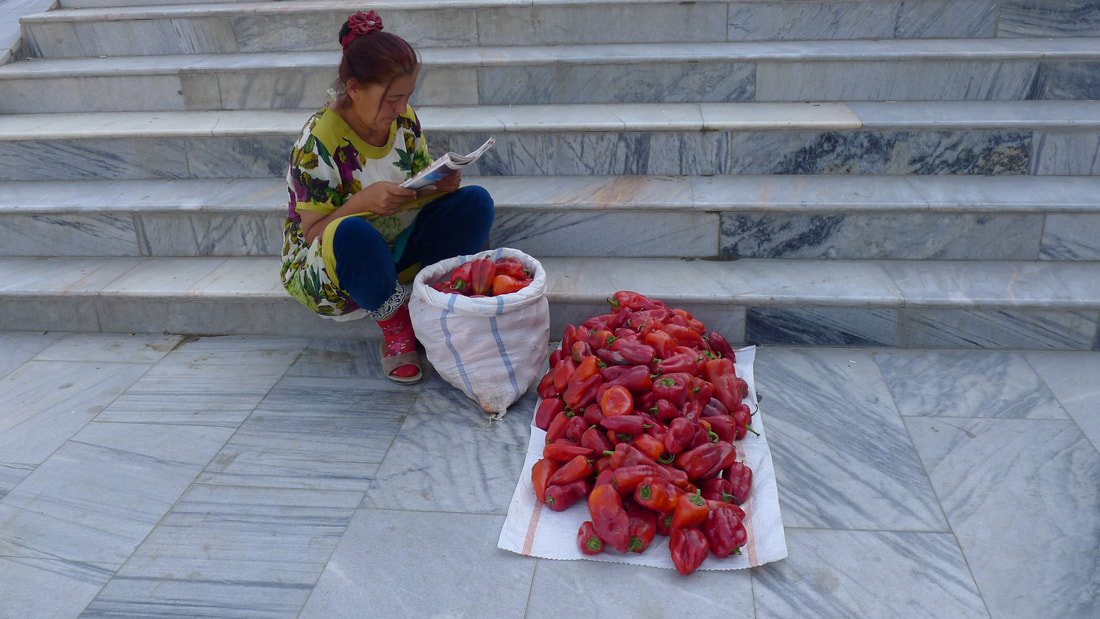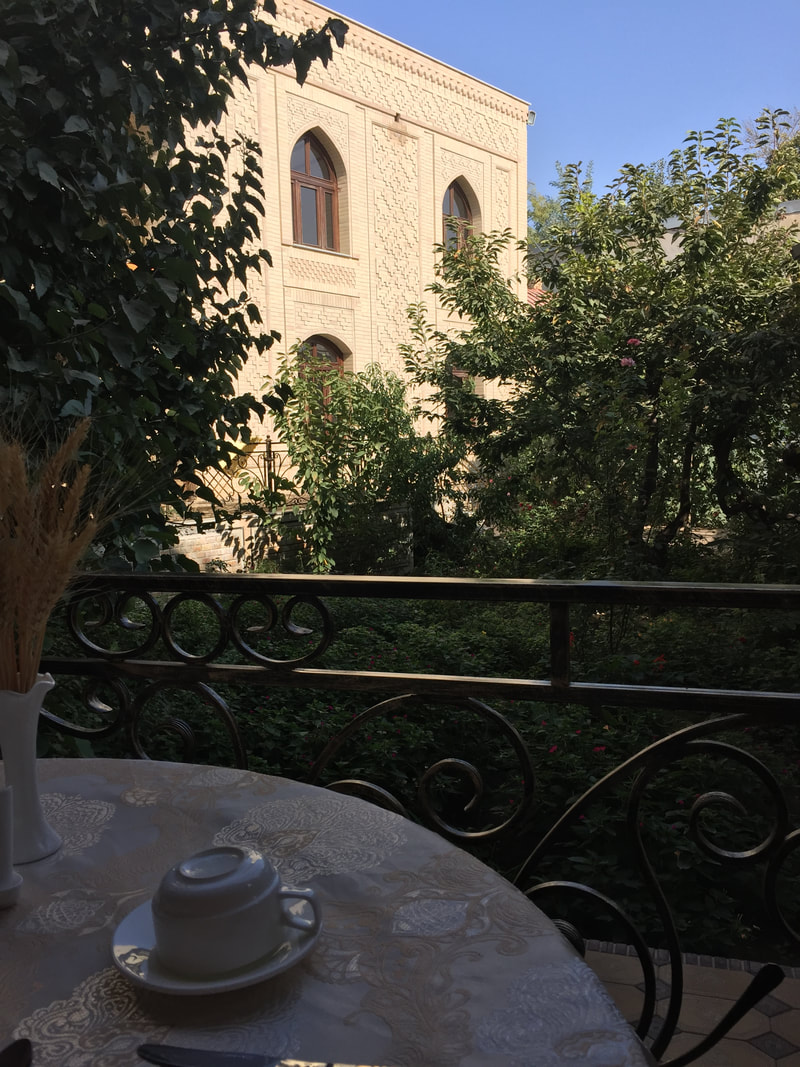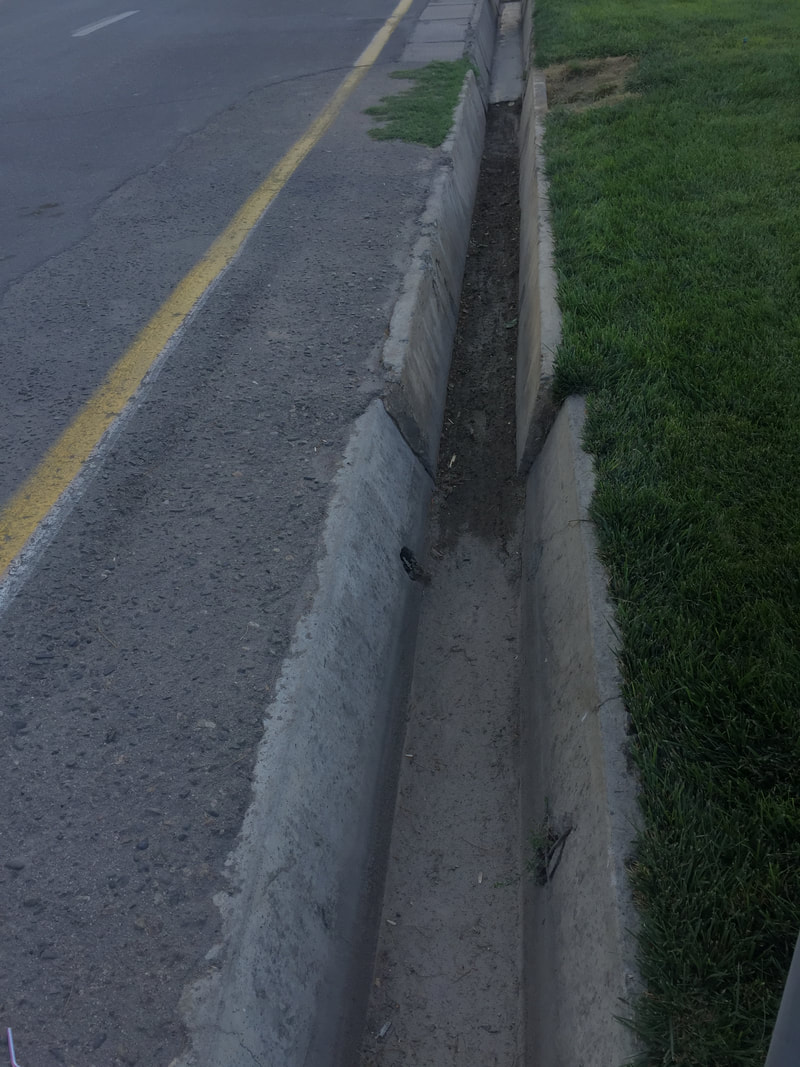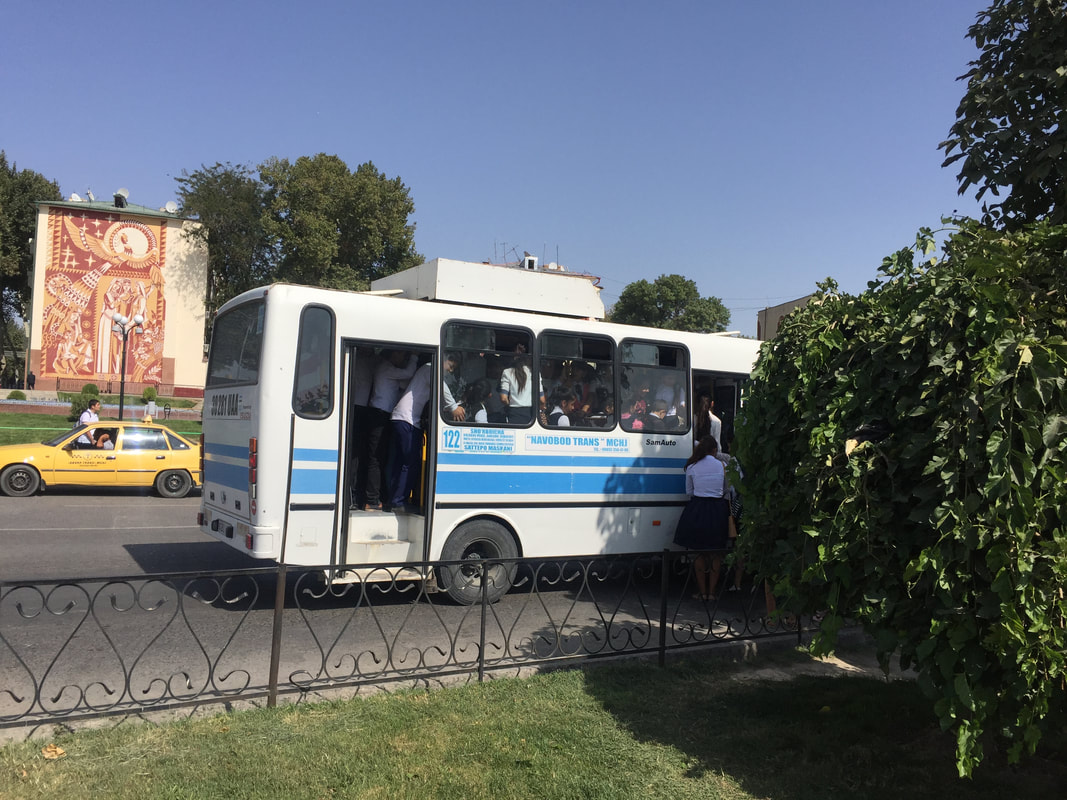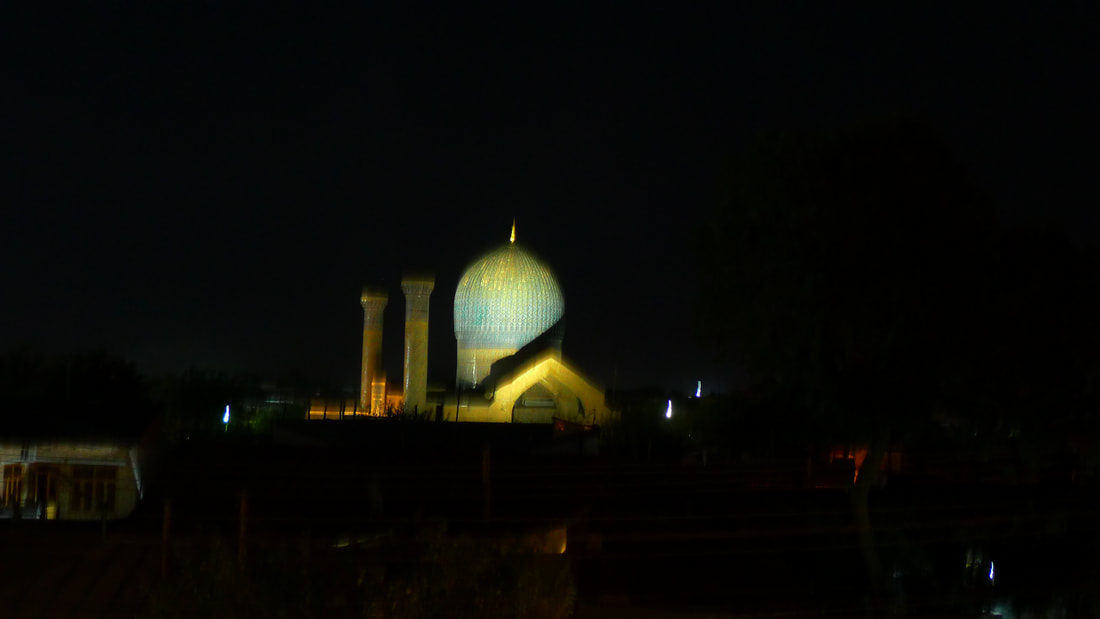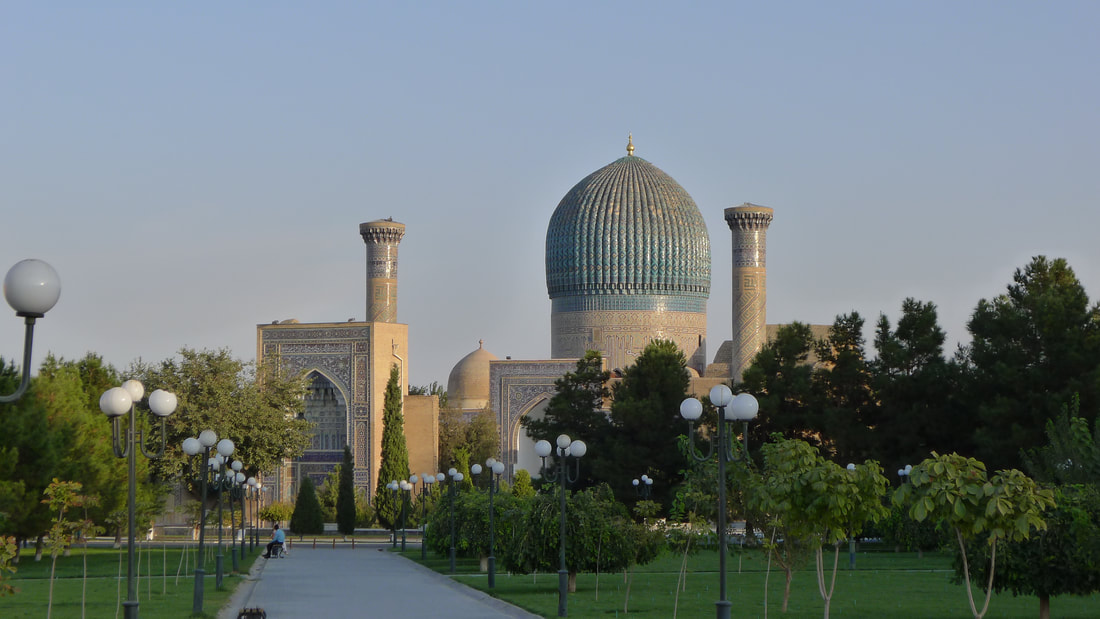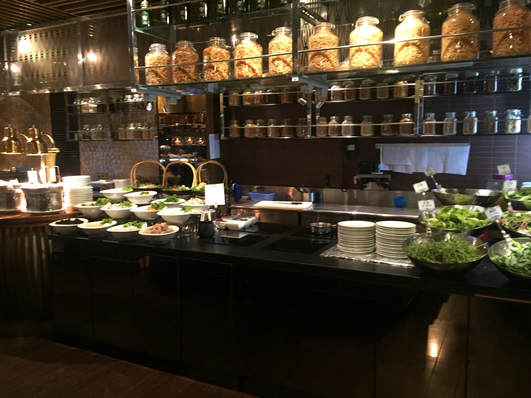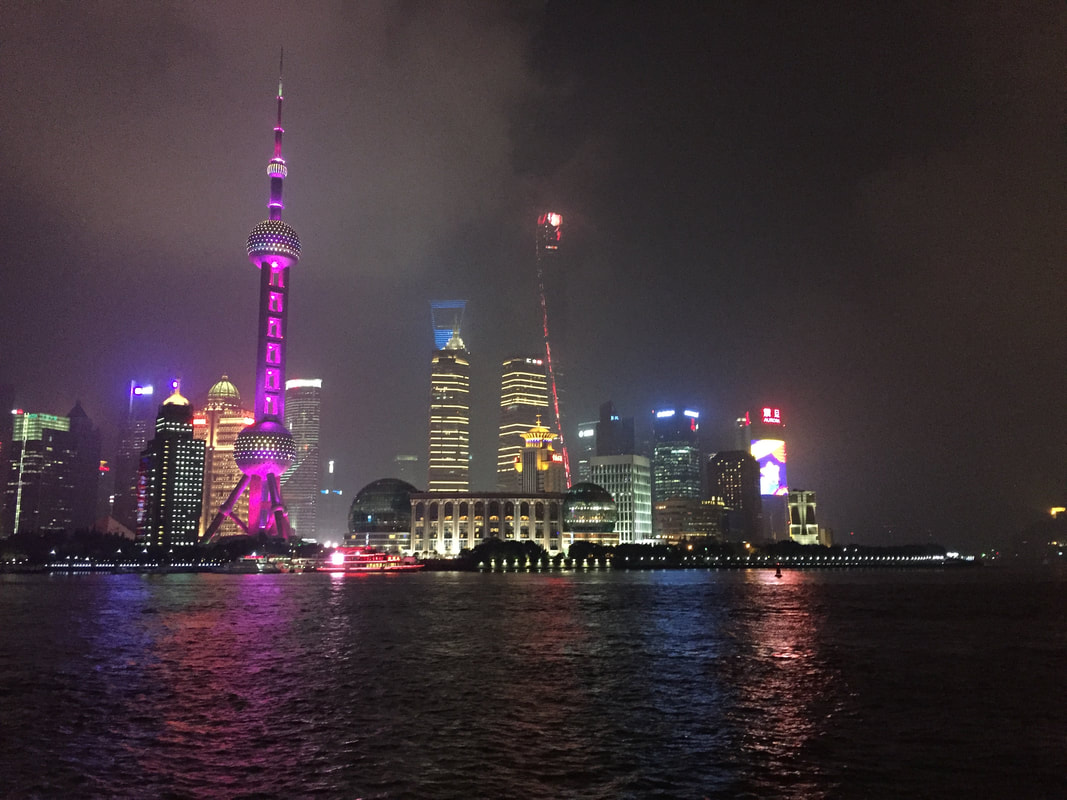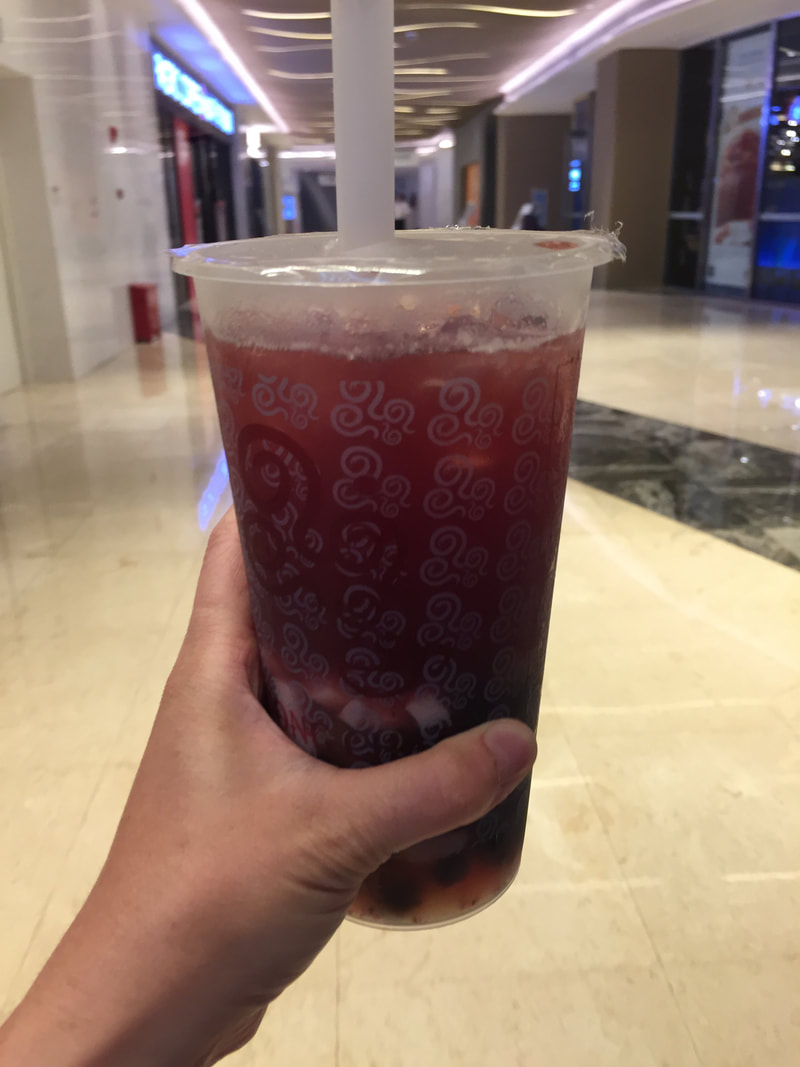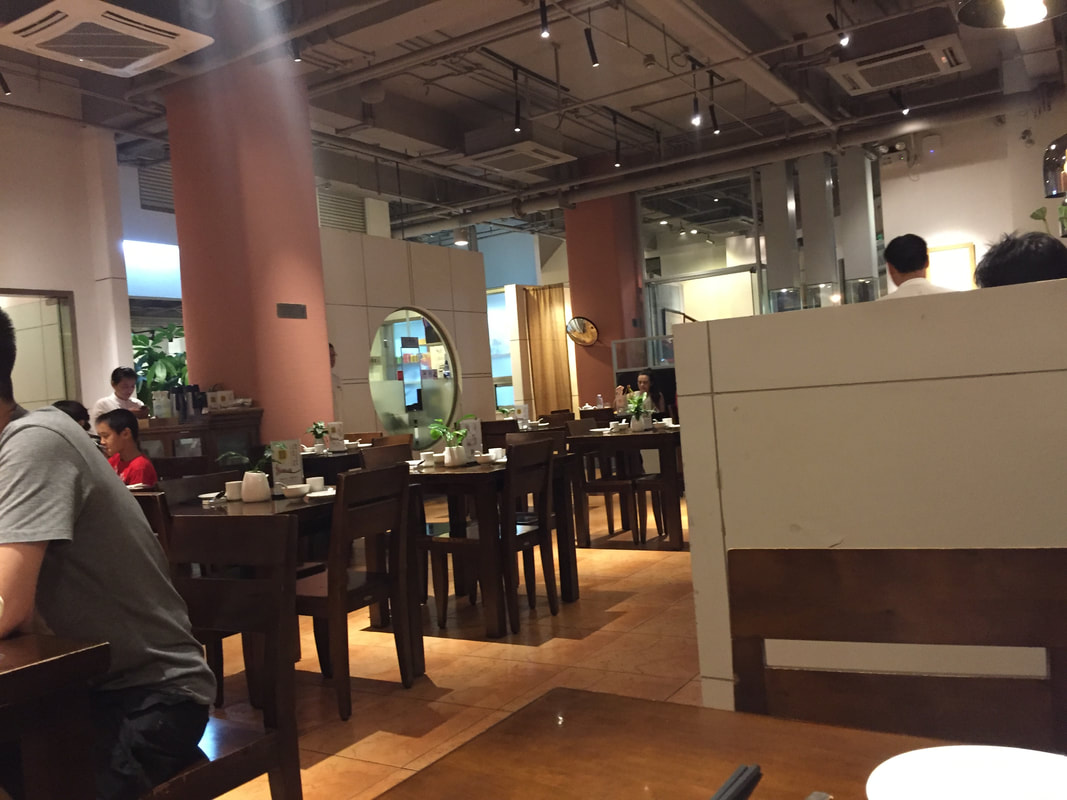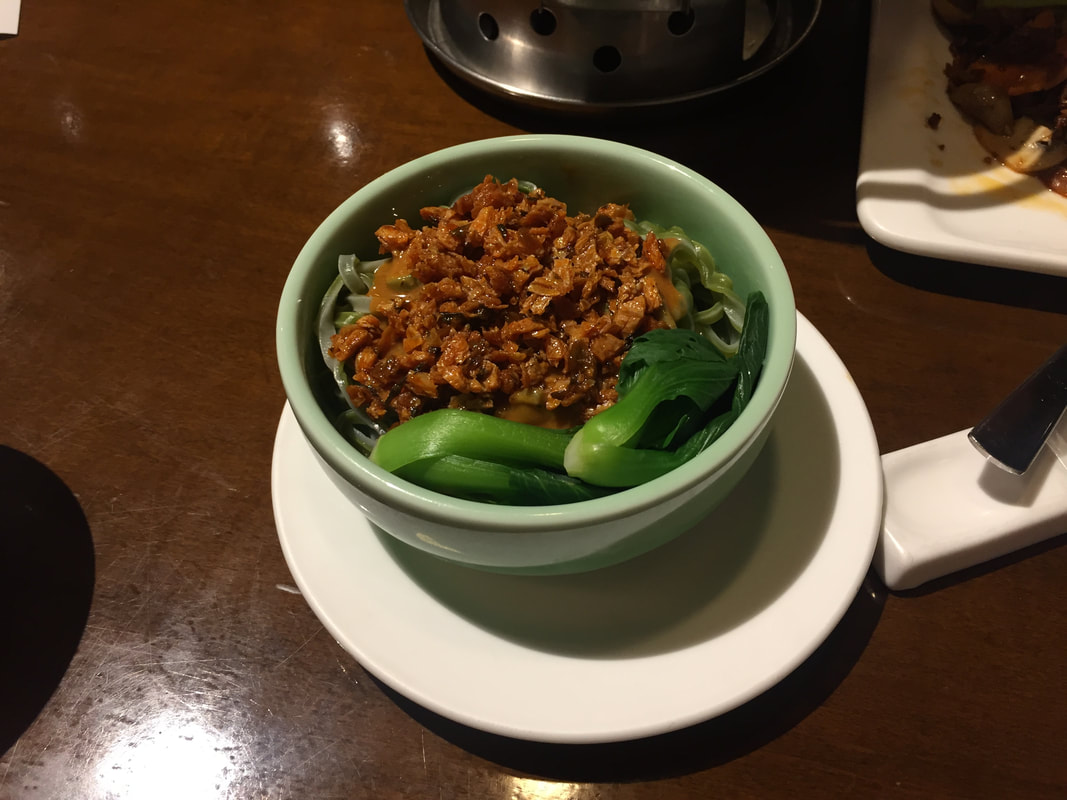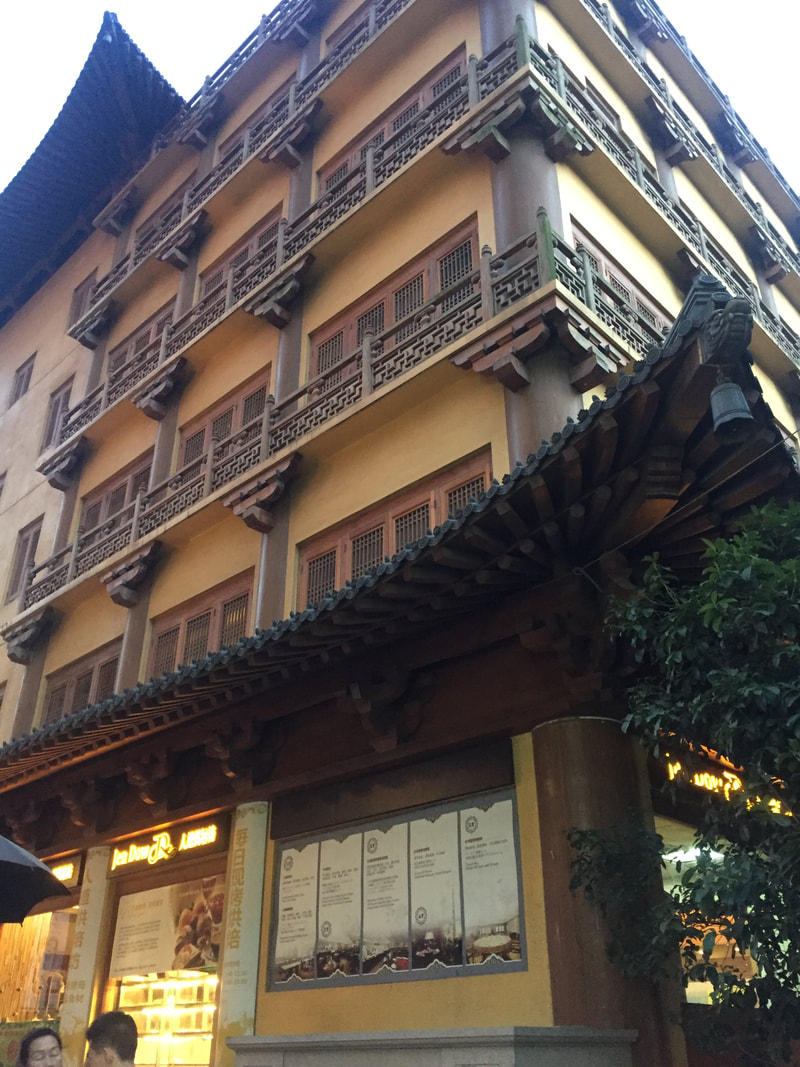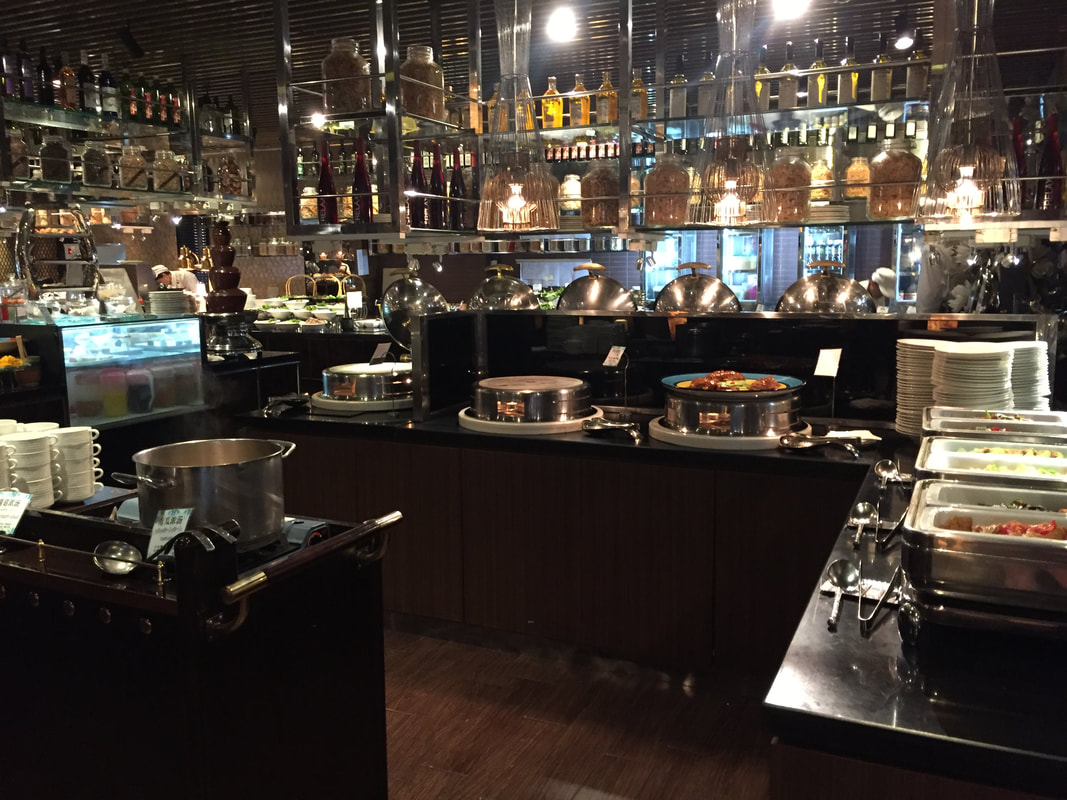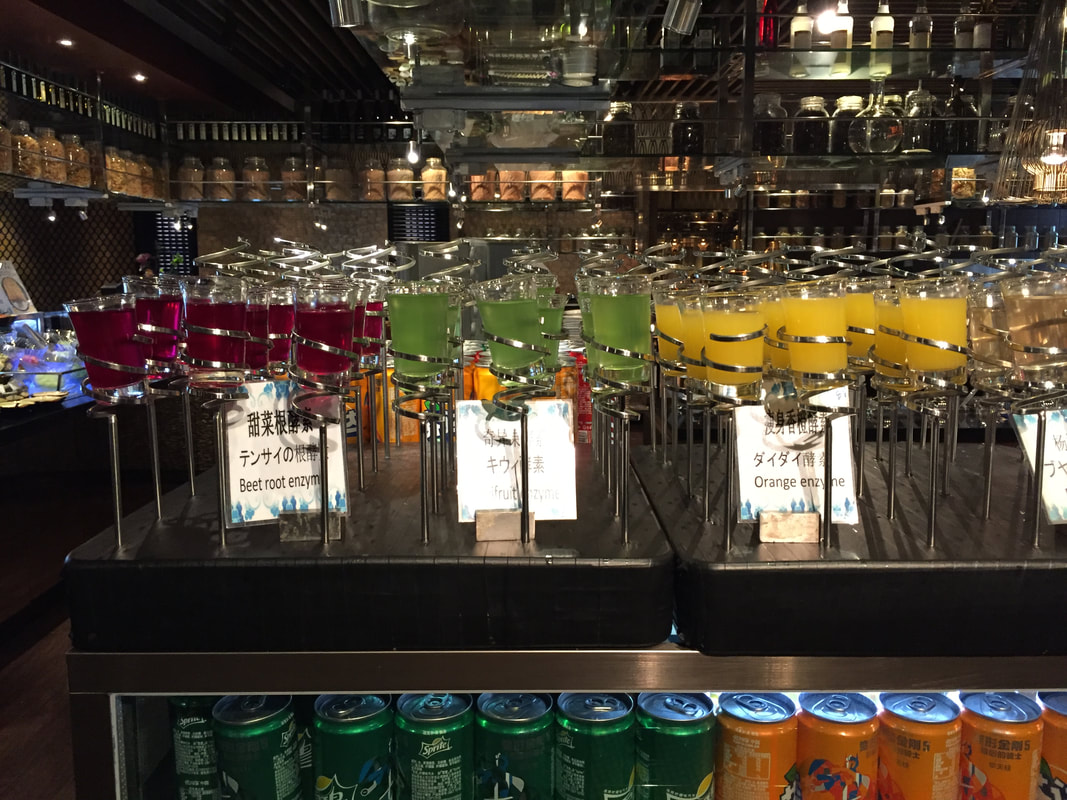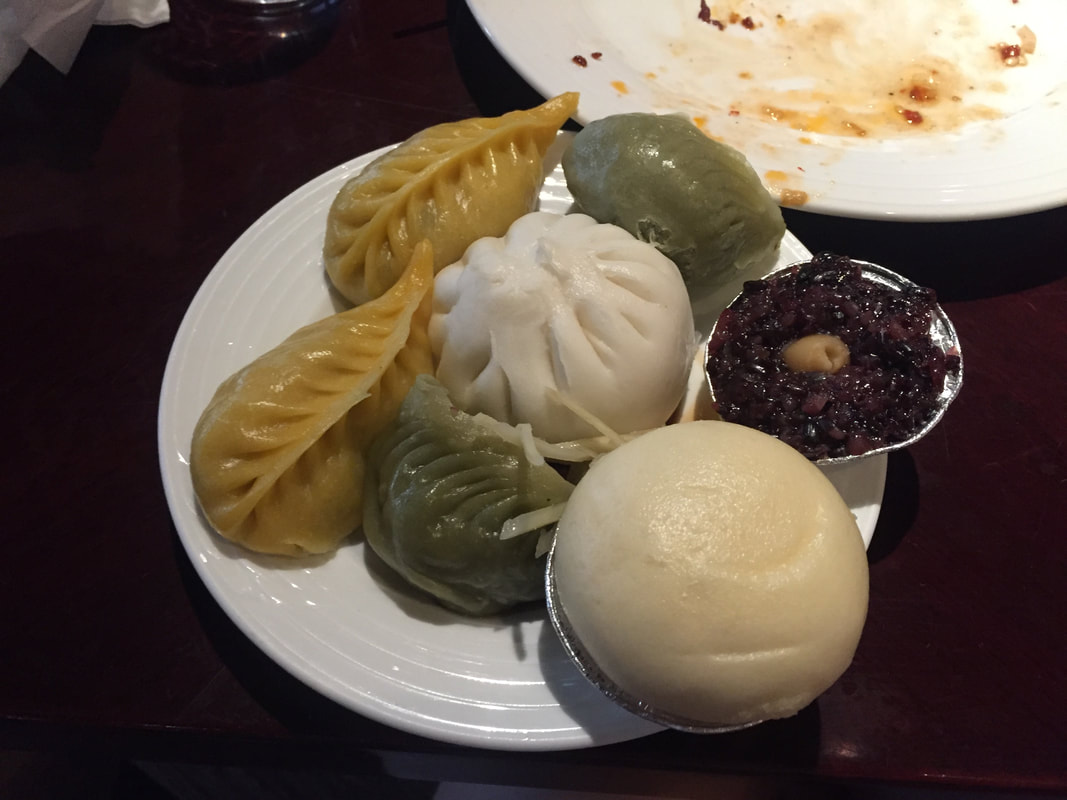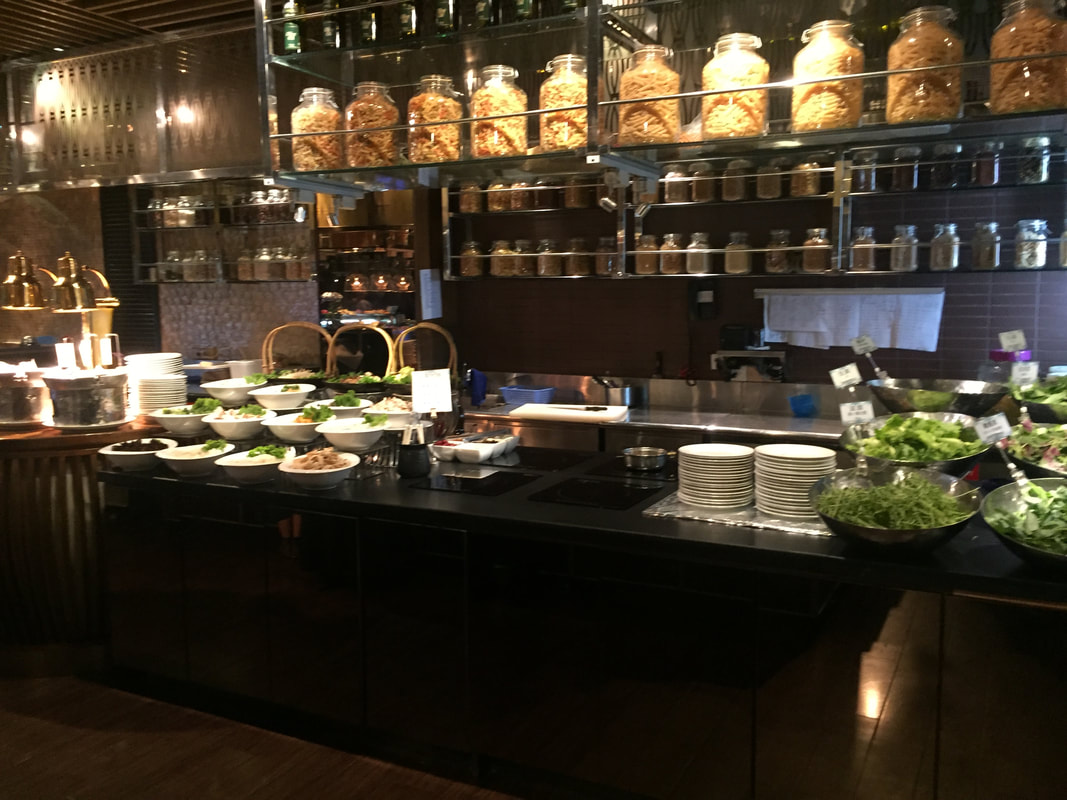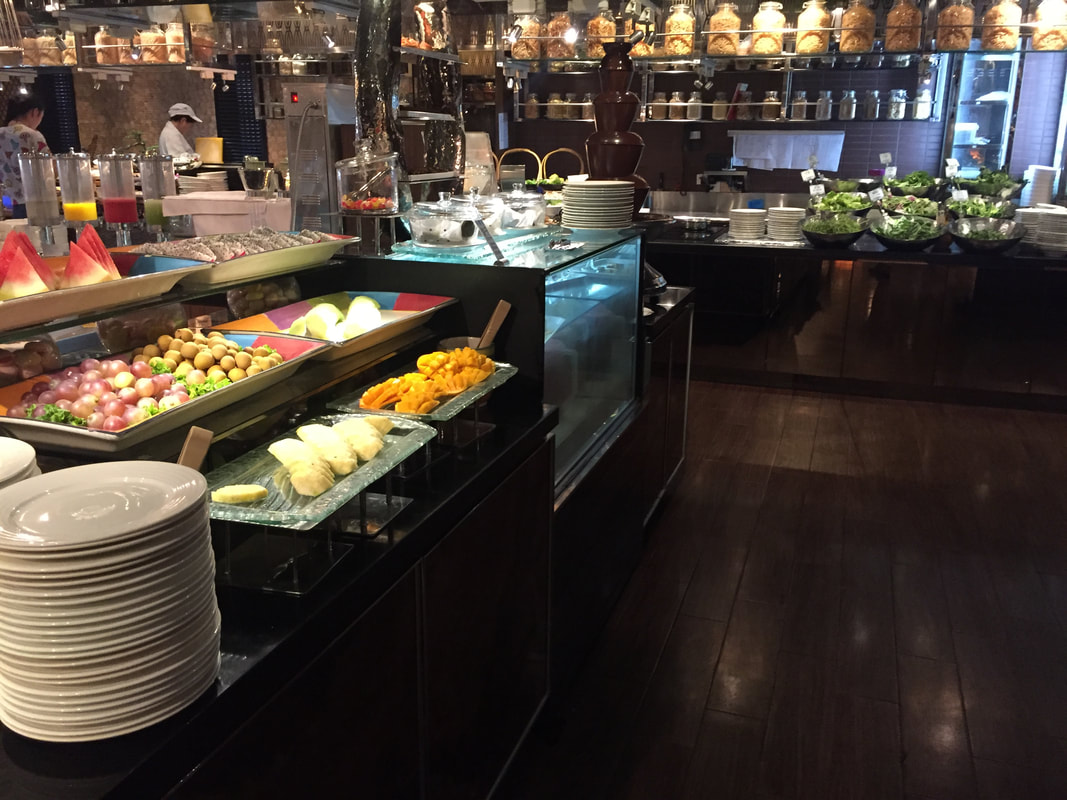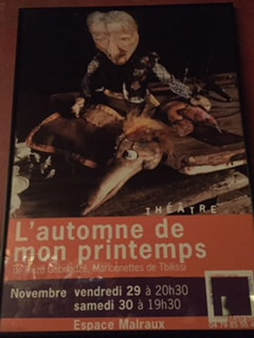 "The Autumn of My Springtime" at Tbilisi's Marionette Theatreby Randi / April 19, 2018
"The Autumn of My Springtime" at Tbilisi's Marionette Theatreby Randi / April 19, 2018Taking a tour of a disaster zone seems like it maybe would be lower down on the list of must-dos for a tourist visiting a foreign country, but when you are in Ukraine, a visit to Chernobyl is essential. This nuclear disaster from 1986 (actually, from April 25, 1986 so happy(?) anniversary) is something all of us have heard of, but few know the details about how it affected everyday people (in large part because of all the government-imposed secrecy and/or lies (‘ALLEGEDLY’)). Understanding how devastating the catastrophe was to ordinary people is difficult without seeing the damage firsthand. We hear too often about this or that terrible event that occurred here or there but when you’re removed from it, it’s hard to really grasp what happened. Visiting Chernobyl, we learned so much more about not only the disaster but about Ukraine and international politics in general than we could have otherwise. Seeing and experiencing this in person is necessary. And there is so much information about this horrible event still coming to light after years of lies and cover-ups, so a visit now is super interesting, providing a fascinating look into this sad history.
The Chernobyl disaster occurred during a safety test in the middle of the night, as ironic as that sounds. The test simulated a blackout power failure where safety systems were turned off on purpose. It is generally said that the operators performing the test were really bad at their job and they arranged the core improperly, so that a reaction occurred, and, since all the safety measures were turned off for the test, it got out of hand real fast. Like all events of this nature, there are tons of conspiracy theories floating around about what the real truth is, and though I don’t like to indulge such theorists, I must admit it is a little too convenient to blame all of this on a handful of individual workers doing their single task improperly. Anyway, there was a power surge and the attempts to shut it down added to all the power output and I want to say that water got into the core? And erupted into a steam explosion? And then a graphite fire? Firefighters tried to put it out with their normal methods but this wasn’t like a wood-burning stove, it was a freaking nuclear reaction, but they had no idea how to counter such a fire. It burned and burned for 9 days. Huge numbers of service people who tried to fight the fire ended up with radiation-caused illnesses – immediately, acute radiation syndrome and lethal doses of radiation; and longer-term, radiation-caused cancers. Many died painful, awful deaths, especially the bravest ones who had to get the closest in order to stop the flow of water into the core. These heroes were referred to as Liquidators, and approximately 600,000 such workers served in the aftermath of the explosion. That’s right, 600,000. Some organizations estimate that 60,000 (10%) died from radiation and 160,000 were disabled from it. Accurate numbers don’t really exist because of all the politics of the countries involved (and Russia pretty much refuses to honestly investigate it) so it’s safe to guess that real figures are higher. This is just one example of how the politicians involved wanted to sweep so much of what happened under the rug and refuse to tell the truth to the populace. And it’s not just the former Soviet block: As the radiation cloud blew over the USSR and Europe, France told its citizens that it was not dangerous radiation at all, outright denying that such a cloud was in their airspace, which it totally was. It’s not just Soviet dictatorships that lie to their people!
Everything about this disaster is terrifying, including how the people who lived in the surrounding area were treated. These were normal residential places, like Pripyat, a regular town that happened to have a nuclear power plant, like in The Simpsons. In the few days right after the explosion, a zone of 10 kilometers around the explosion was evacuated. The next day or so, the zone was increased to 30 kilometers, with more and more people bussed out day by day. All of these people were told that the evacuation would be for a few days only and so they didn’t need to bring any of their things. They could carry, well, only what they could carry. They were told they’d be back in their homes in a few days. In fact, none of them were ever allowed back into town, let alone into their homes, not until everything had long been destroyed at least, as we will see in this post. Eventually, as the explosion continued sending plumes of radiation into the atmosphere with no end in sight, the number of evacuees in that first year reached 135,000 people. The number would triple over the next few years.
Although the technical information about the explosion itself is what most research will talk about, the human element of all the residents whose lives were forever changed is really what a tour to Chernobyl makes you consider the most. Seeing all of the homes, the schools, the gyms, all the everyday aspects of an everyday town is more effective than anything else in showing how many people lost everything they knew before they knew it was happening. And they were the lucky ones who didn’t get exposed to lethal doses of radiation. What these residents went through is tragic and heartbreaking, and infuriating when it comes to the government.
So we had to go SEE the thing! as everyone who visits Kyiv should and does. We choked down some Cherno-bly and booked two spots on the group tour with SoloEast Travel Chernobyl Tours, the website of which features the host of Top Gear as their celebrity client, which adds to the whole ‘this is a weird thing guys’ vibe of a tourism jaunt to a nuclear disaster zone. SoloEast has great reviews so we paid the approximately $80 per person for the all-day tour. It’s a lot but it is all day and it is a reputable company that actually teaches you stuff. We met in the morning in the central square of Kyiv, called Independence Square, on the side where there is a McDonald’s which is great because Z could get coffee and I could pee twice before we left. The drive would be several hours but luckily they stopped enough at gas stations (usually for ice cream? for breakfast? I saw this all over this part of the world really) so I never had to worry too much about bathroom breaks. I mean I did still worry of course, but I didn’t need to. We got seats right up front behind the driver, my favorite seat, ostensibly so we could talk to the guides and ask extra questions and get extra guidance and info but really so I could become their friend and ask for a stop whenever I needed. Also it’s better for motion sickness. And also to get away from the yoots in the back (always) who bought alcohol at every gas station like they thought they were cool or something. Yeesh.
Oh and look at this one’s backpack. Man alive.
Okay that’s enough of the silly things. It’s time to get serious. You must wear longs-and-longs, in camp lingo – long pants and long sleeves, and closed shoes like sneakers. (This is to protect your skin from radiation, although it is generally safe to visit, no more dangerous radiation-wise than flying, really.) Once we got into the Chernobyl zone, there are a lot of checkpoints. Everyone has to get off the bus for the guards to look you over and check your passports. (Oh you have to bring your passport.) Sometimes the checkpoints were simple and fast, other times took longer. There is one main checkpoint into the area where all the busses of tourists coming that day convene and you can stare at all the other tourists and you can buy really weird souvenirs and most importantly you can pee. Oh I think it goes without saying, but bring all the water you will need for the day. And snacks. Lunch at the barracks is included (tomato and cucumber salad, what what! (and soup) (it was fine and very nice to accommodate vegans)) but anything else you’ll need, bring yourself.
After that, the long day of learning and lamenting can begin. We started out by walking around small abandoned cottages out in the woods in the outer edges of the Exclusion Zone. Some people refused to evacuate, some came back as soon as they could, and some left forever, so there’s a real mix of what you’ll find out here. Mostly, though, you find completely trashed shelters. This is not from the nuclear fallout, no; this is from vandalism (yoots). Everything we found that was destroyed (which was, indeed, everything) all over Pripyat and the surrounding towns we visited mainly had shitty delinquent thieves and other generalized sorts of offenders to thank for the damage, all of that that wasn’t due to age and rust. People are terrible. Even so, it’s easy to see what utter abandonment did to the once vibrant towns.
As you can see, the floors are not in good shape. It is treacherous to walk around certain parts of certain buildings, so it can be a lil bit scary. If you are not in good ambulatory shape, this tour would be difficult, but I think you can still appreciate everything from outside peeking in (ON THE OUTSIDE ALWAYS LOOKING IN WILL I EVER BE MORE THAN I’VE ALWAYS BEEN CAUSE I’M TAP TAP TAPPING ON THE GLASSSSS I’m sorry I’m done).
In case seeing cottages destroyed isn’t enough, let’s look at all the markings of everyday life that were also ruined. Seeing things like schools, music rooms, auditoriums (I’m not going to say auditoria) (I know I just did but you know what I meant) (I’m not that much of a jerk) &c in this state really hurts.
After exploring these woods at the outer limits of the Exclusion Zone, we made our way closer and closer to the center – the reactor, and into Pripyat. The town of Pripyat was made up of more Soviet-style apartment blocks rather than single-family houses, and we went into the buildings that were more stable. I think these apartment buildings are even more emotionally challenging to reckon with than the houses because you’re seeing so many people’s lost homes at once, so much loss and wreckage in one place. Also climbing up those stairs was terrifying.
We also saw all the markers of a regular town, or what’s left of them. From the world’s saddest jungle gym to the world’s saddest Ferris Wheel et al. at the amusement park, to the world’s saddest indoor pool and the…well, you know, just the World’s Saddest everything/fill-in-the-blank.
The Ferris Wheel pictured below had the highest level of radiation as measured on our Geiger counters that we went around with, save for when we were driving through the Red Forest on our way out from the plant. Geiger counters measure the levels of radiation nearby. We took a ‘normal’ reading in Kyiv when we first met the tour guides, which was about 0.3, and we watched as the numbers changed through the day. It rose to 0.77 as we approached the Ferris Wheel and jumped to 4.78 when we touched the counter to the carriage. I don’t know if we were supposed to do that but there we are. Driving through the Red Forest it soared to 14!!!! And we were inside the bus! When discussing radiation levels, people often talk about bananas, because the forms of potassium in bananas have lil bits of radioactivity. In fact, scientists actually use the measurement BED, or Banana Equivalent Dose, which is hilarious, and I’m not going to get all scientific here or anything, but it’s not used because bananas are dangerous or anything; it’ s just because using something so recognizable that has some radiation but not a dangerous level or anything makes it easy for us normies to compare relative radiation levels and risks. It’s a point of reference, so be assured that bananas, although a tiny bit radioactive (the most of any fruit), are not dangerous (not unless you eat a shittonne so we can still hope that Freelee gets hers).
And here’s the saddest thing to me, an indoor pool without that amazing indoor pool smell. I know I’m weird but it’s the best smell. This is the hill I stand on, I guess.
One of the most effective parts of this tour, as you can see above in the pool picture and below, is that the guides often showed us pictures of what it looked like exactly where we were standing but before the disaster.
We also got to see the Duga Radar system, which was a Soviet early-warning system used during the Cold War. It was meant to detect ballistic missiles. This thing was enormous and Z was really excited to see it because he knew about its historic significance, while I pretty much just wanted to climb it (you can’t) (and shouldn’t).
Next, we made our way to the actual plant. Not inside obviously but pretty close. We were lucky to visit when we did, because the No. 4 building of the power plant, the building were the explosion began, has a pretty new cover, referred to as the sarcophagus. Early on after the disaster, experts realized that no matter what they did, it would be impossible to rid the plant of its beyond-lethal levels of radiation, so they decided to built a shelter to cover it up and limit the amount of radiation that got out. Design started mere weeks after the explosion! The original sarcophagus, however, corroded in certain spots and was never predicted to last very long anyway, so a shiny new cover was built from steel. This new confinement shelter was built a few hundred meters away and then wheeled into place, on top of #4, in November 2016.
This giant supershiny supersmooth tube-looking thing in the back is the new confinement shelter. The Geiger counter registered 1.17 here, so this thing is really doing its job!
OK, last but certainly not least, we need to talk about the most important issue in Chernobyl today. When I said at the beginning that the citizens of Chernobyl and Pripyat were evacuated and told to leave everything, I didn’t mention the most upsetting part of what they had to leave behind: their pets. Many dogs were left in what became the ghost towns. I know it’s hard to think about it without crying, and by hard I mean impossible. All those doggies made other doggies, as they do, and they beget the current residents of the Chernobyl area, All These Great Doggies. Rule #1, if you go on this tour, you MUST bring a giant bag of dog food, as I did, and feed all of them as much as they want because they don’t get good food regularly.
SO CUTE RIGHT? And so sad. These dogs rely on the kindness of the workers in the zone to feed them, but they need so much more. They need medical care. The great people at Clean Futures Fund have begun a project to help these dogs receive the veterinary care they need, from medicine to vaccines to neuter…onomy. PLEASE DONATE whatever you can to the CFF on their website so do it click here!
To leave Chernobyl, at the last checkpoint you have to go through the dosimeter, to make sure you and your belongings have not become radioactive. I didn’t get a good shot of anyone in the thing, but picture the full-body Rapiscan at airports (the worst thing), how you have to put your hands up and pray that everything goes well and all. Luckily, everyone in our group passed the test! The guide told us that people fail very rarely, usually only if they broke the rules or wandered off into the woods without a guide. One girl apparently had sat down on the ground in the amusement park or something and so her pants got an eensy bit radioactive and she had to leave them there! I don’t know if I believe that story!
So that was our day at Chernobyl. We learned so much – in addition to the guide’s constant guidance, they showed videos on the bus during all the longer segments of the drive. A lot of the videos had relatively new information, like about all the government cover-ups and things only now coming to light. It’s all fascinating and devastating at once. We got back to Kyiv after 7pm, so it is a very long, exhausting, exhilarating day. If you go to Kyiv, you must must take this tour. If you have no plans to go, please for the love of dog give what you can to the Clean Futures Fund Dogs of Chernobyl Project.


